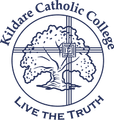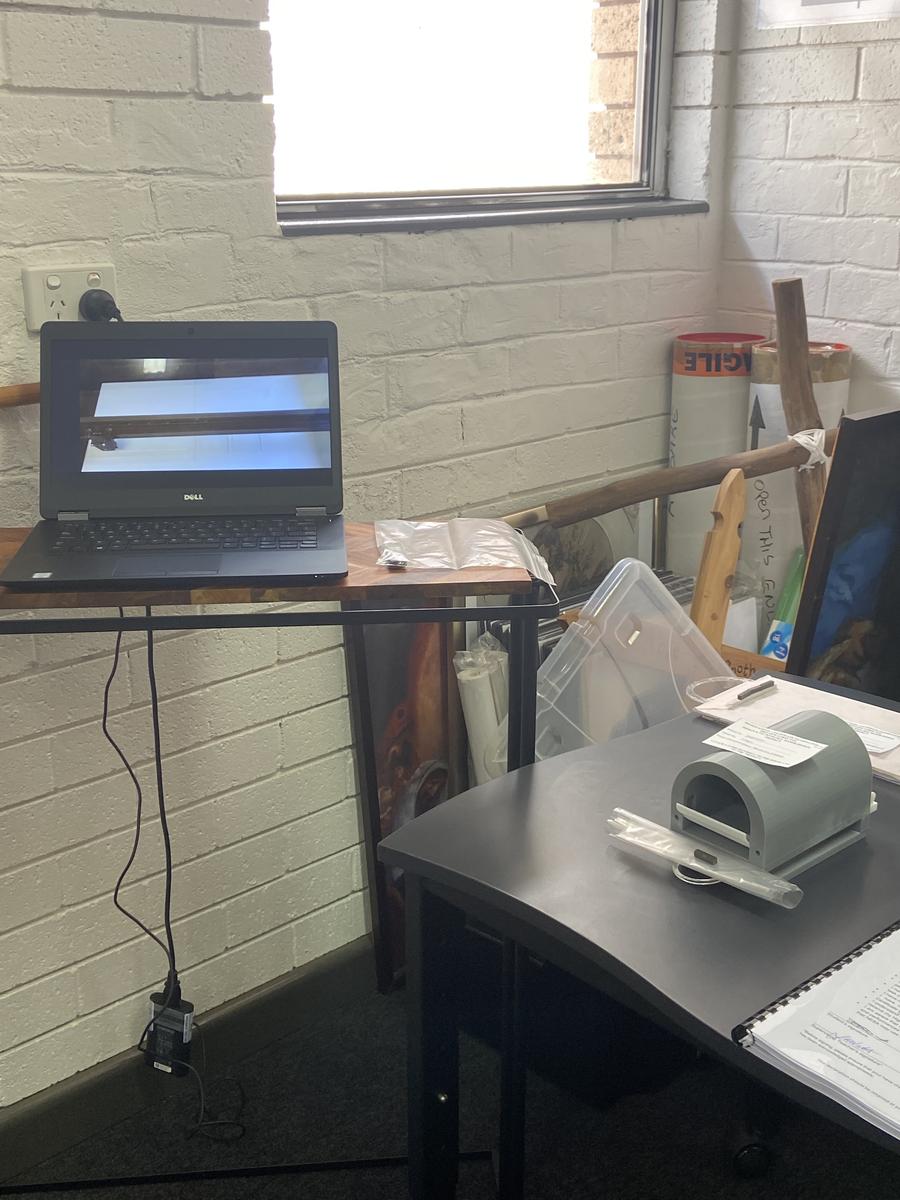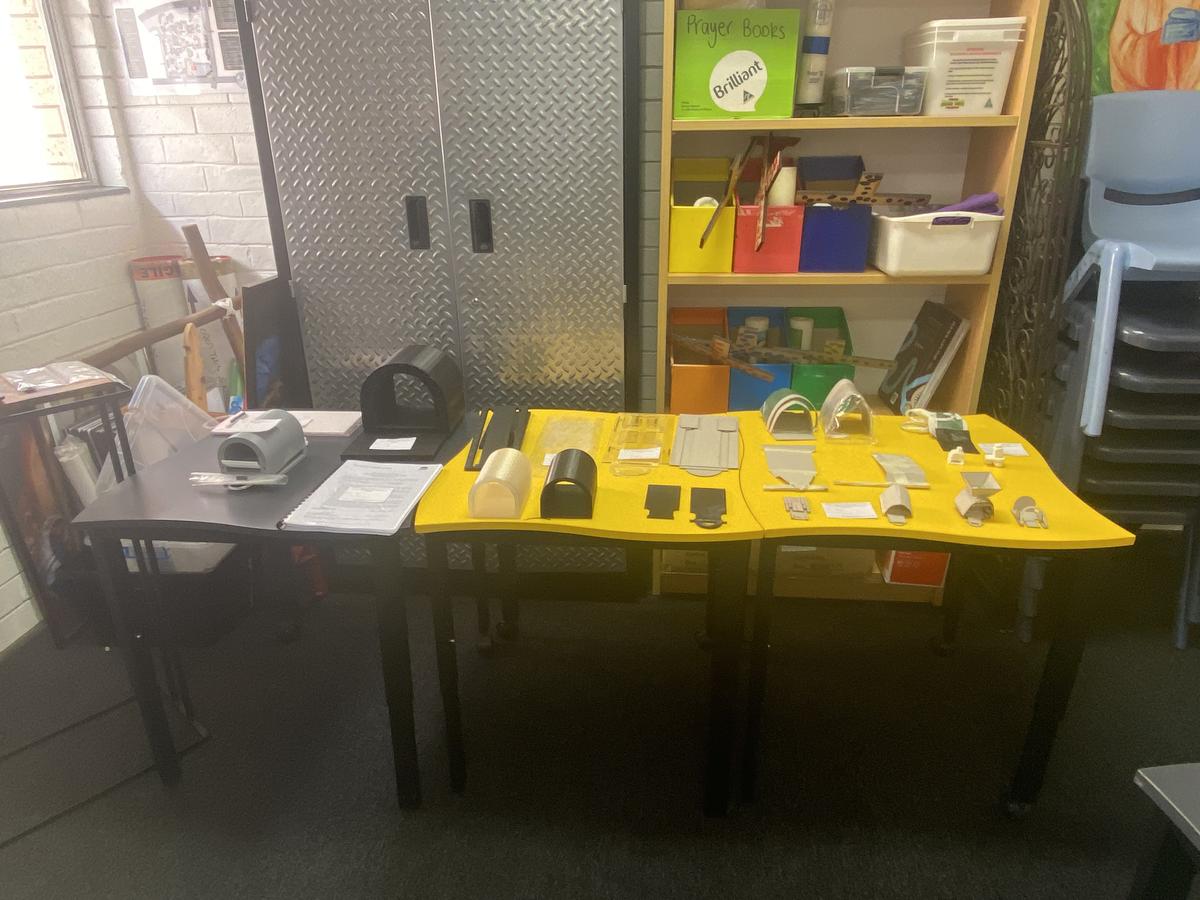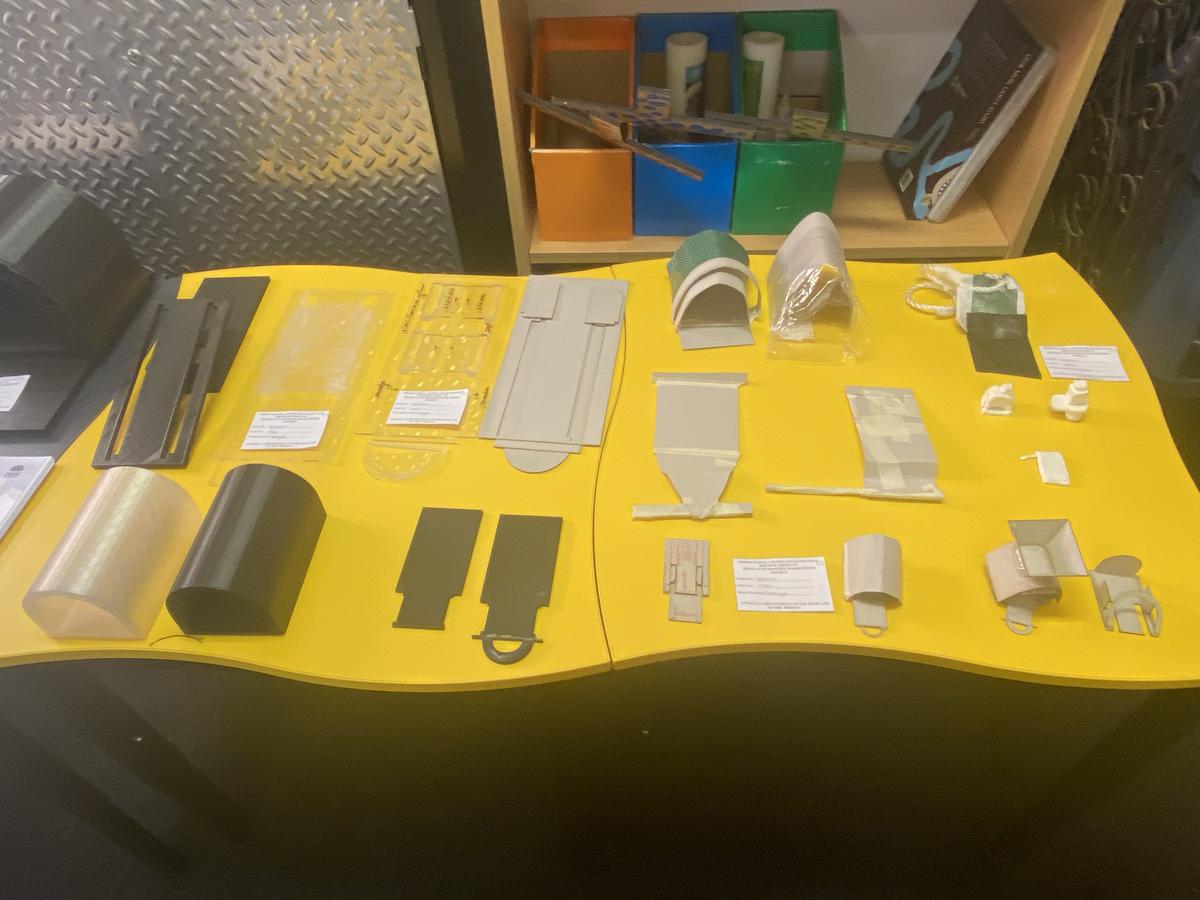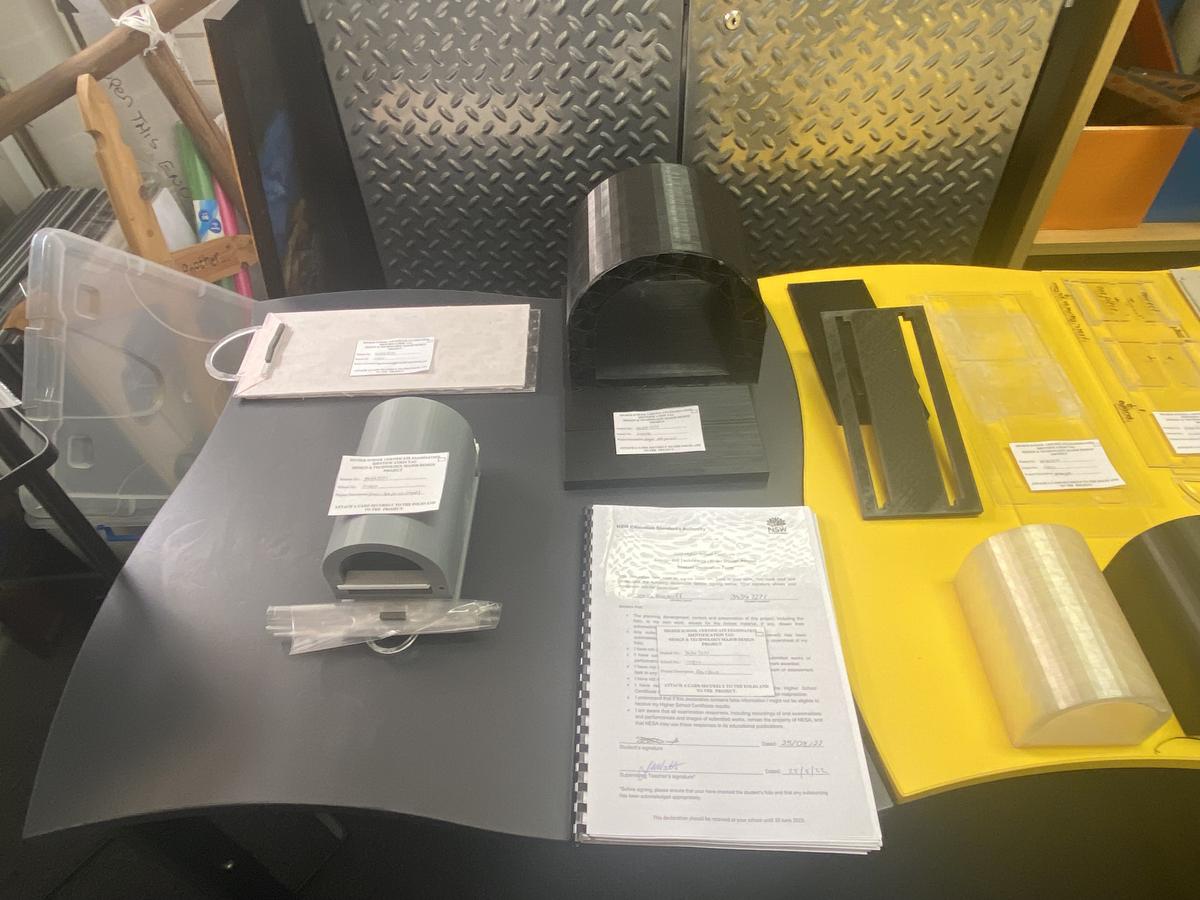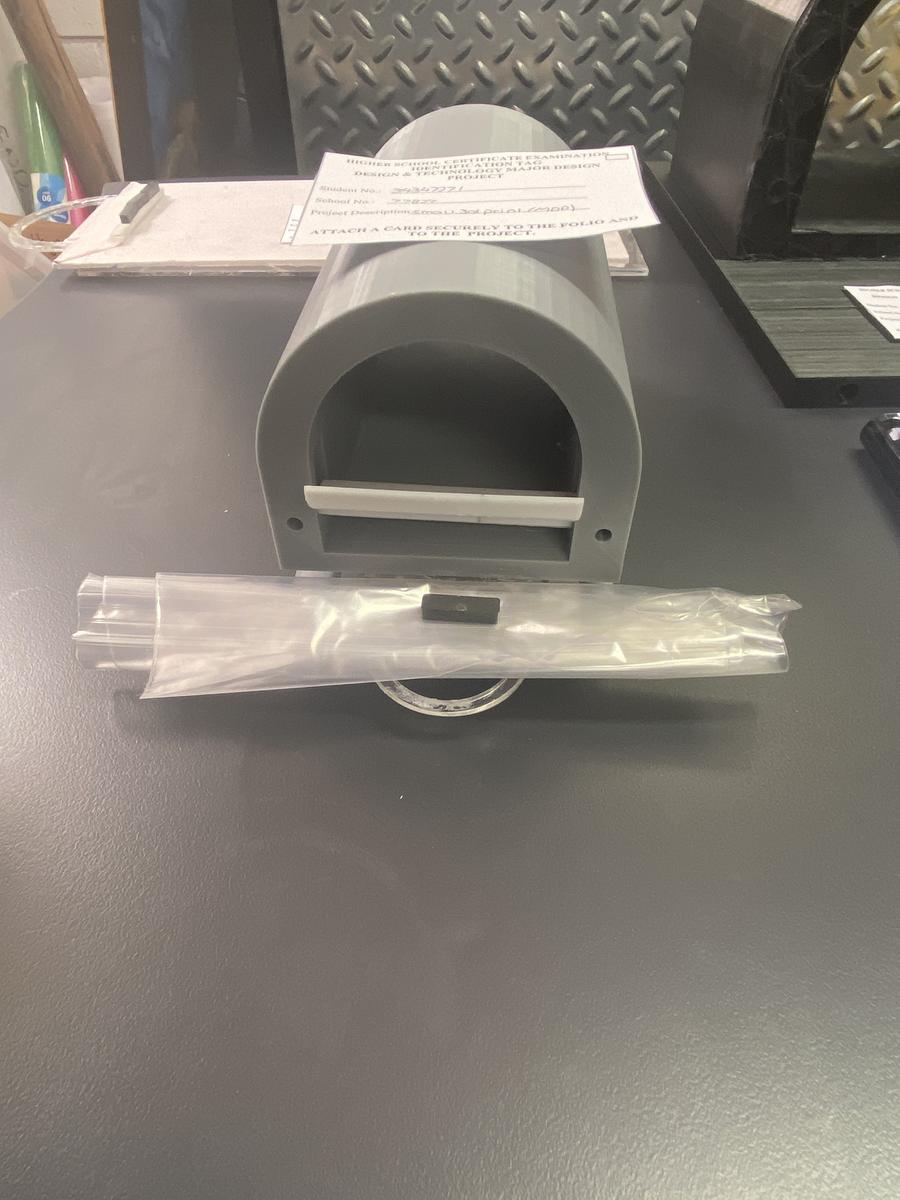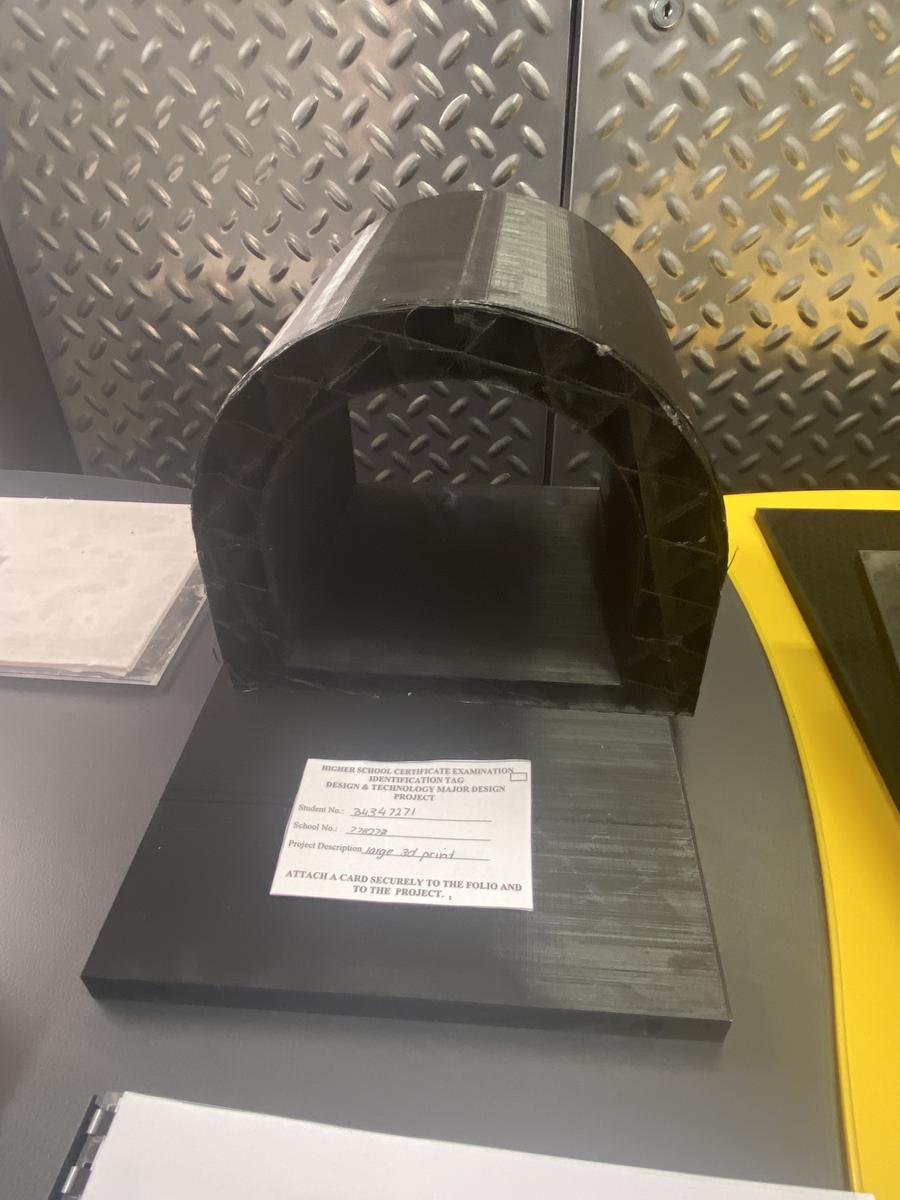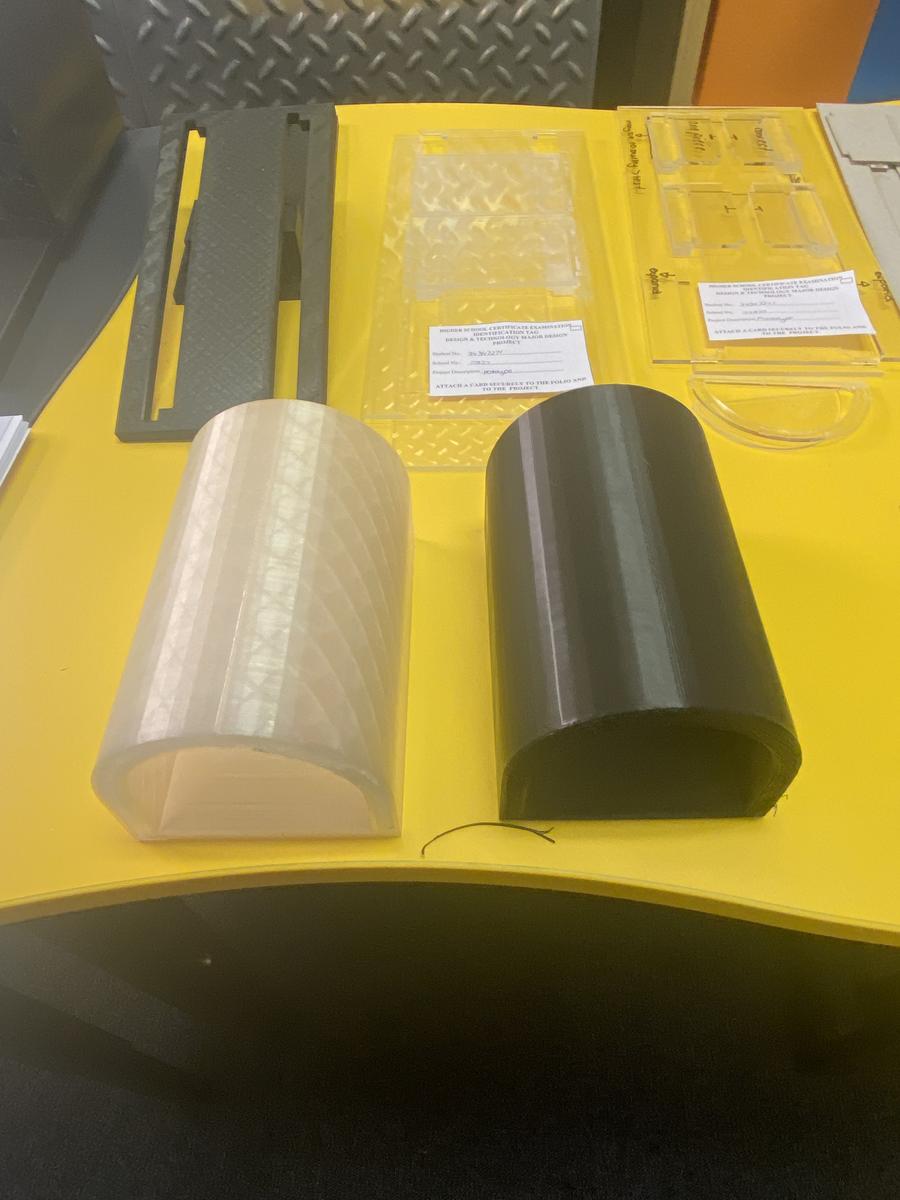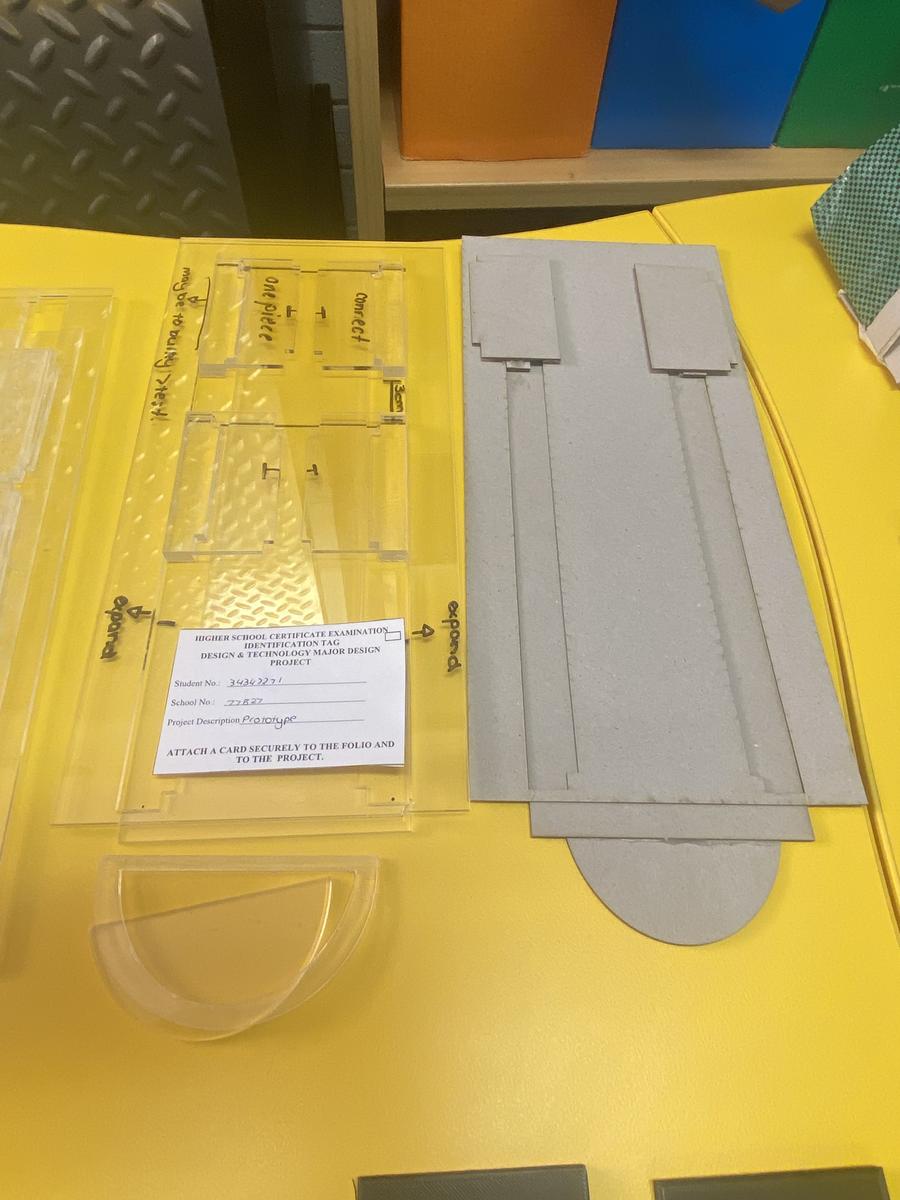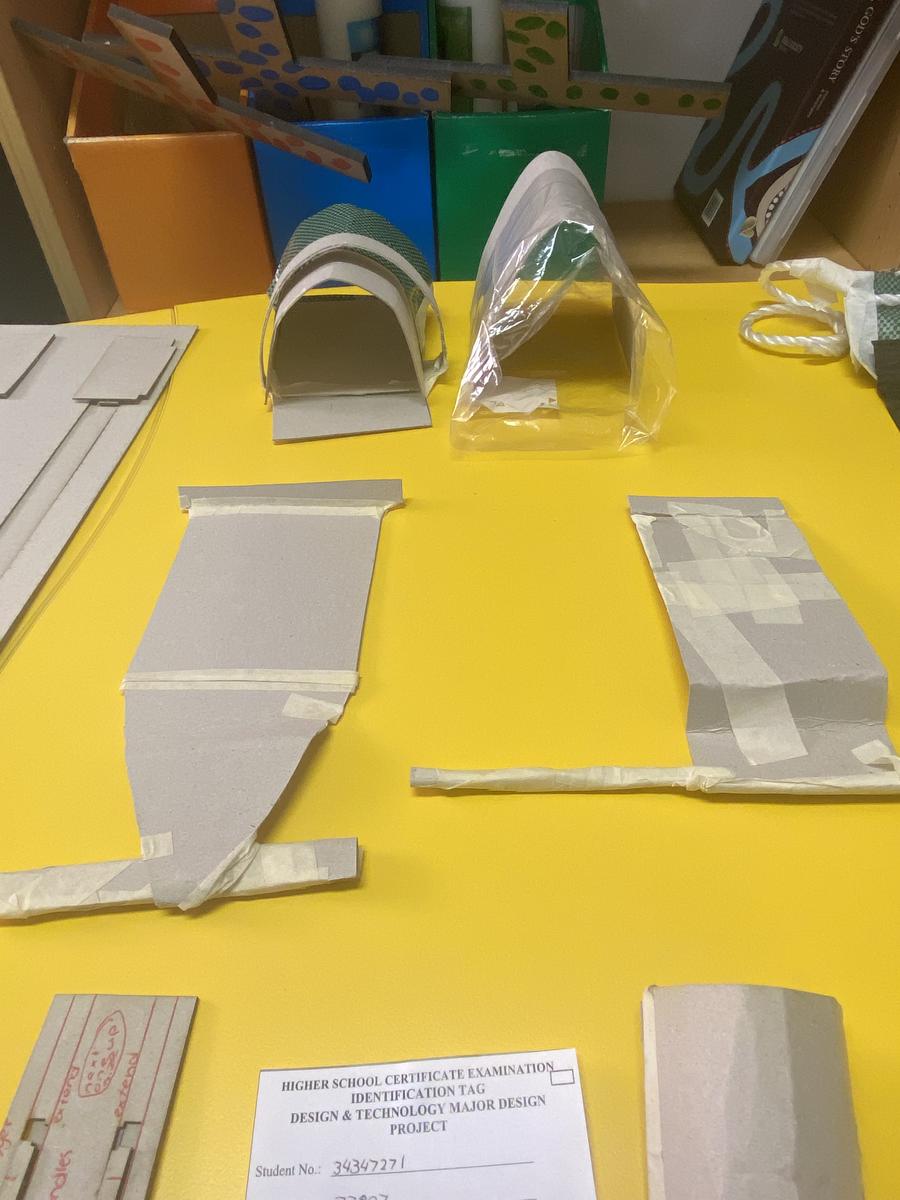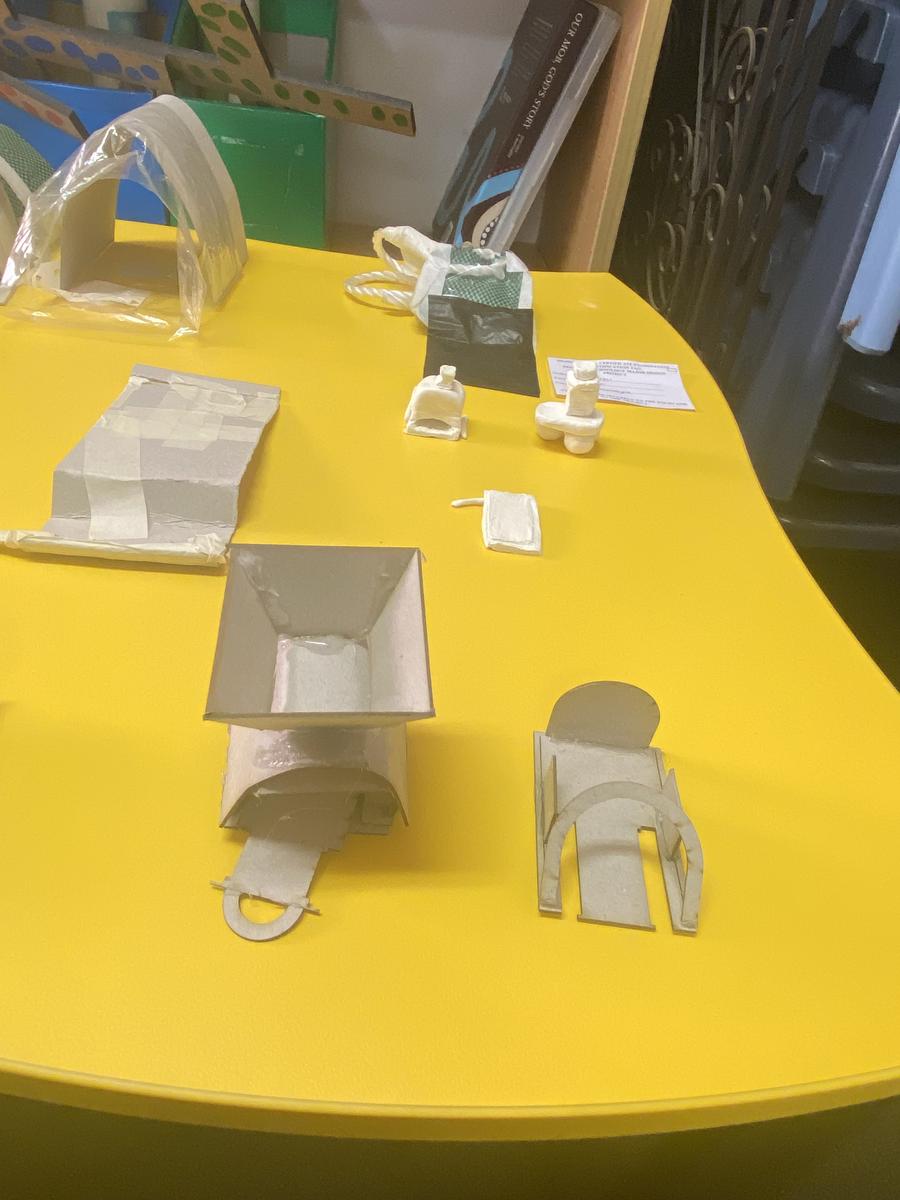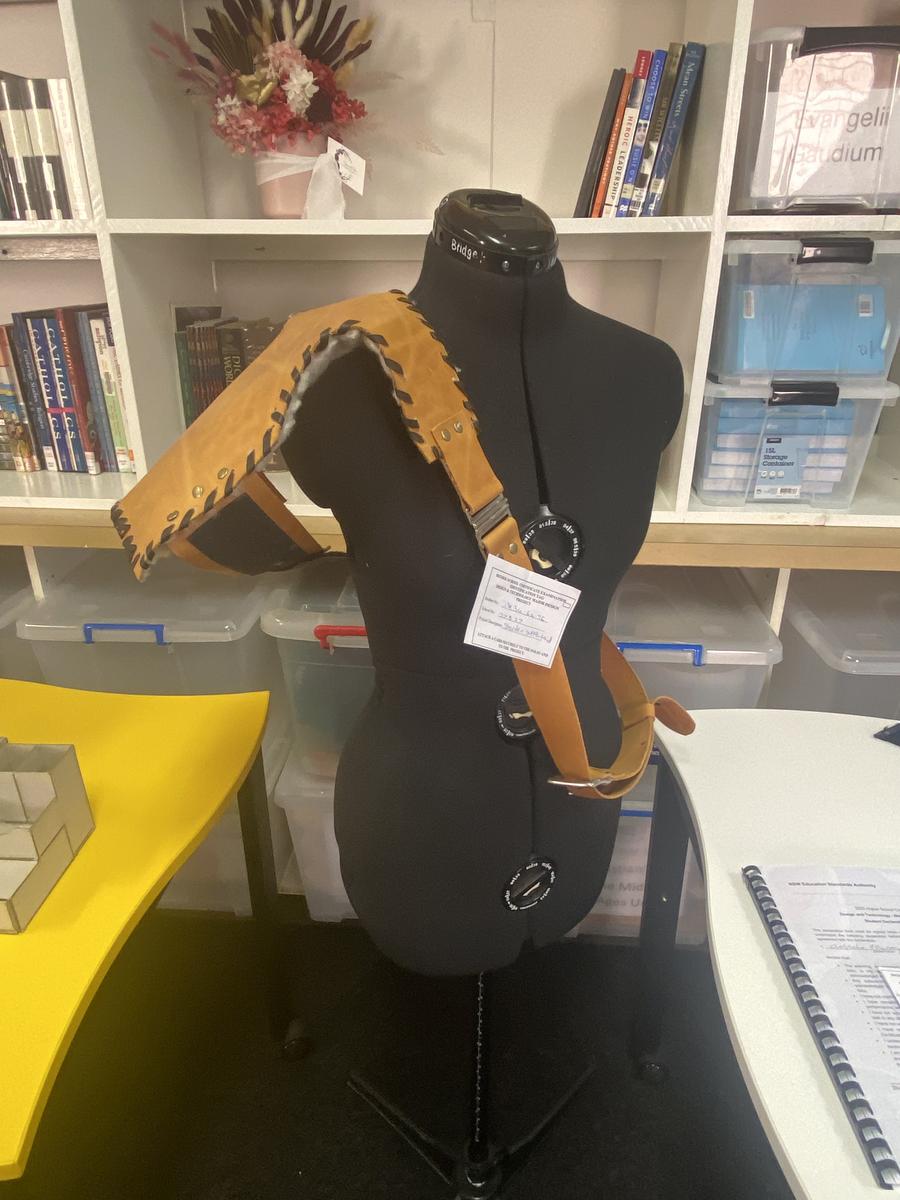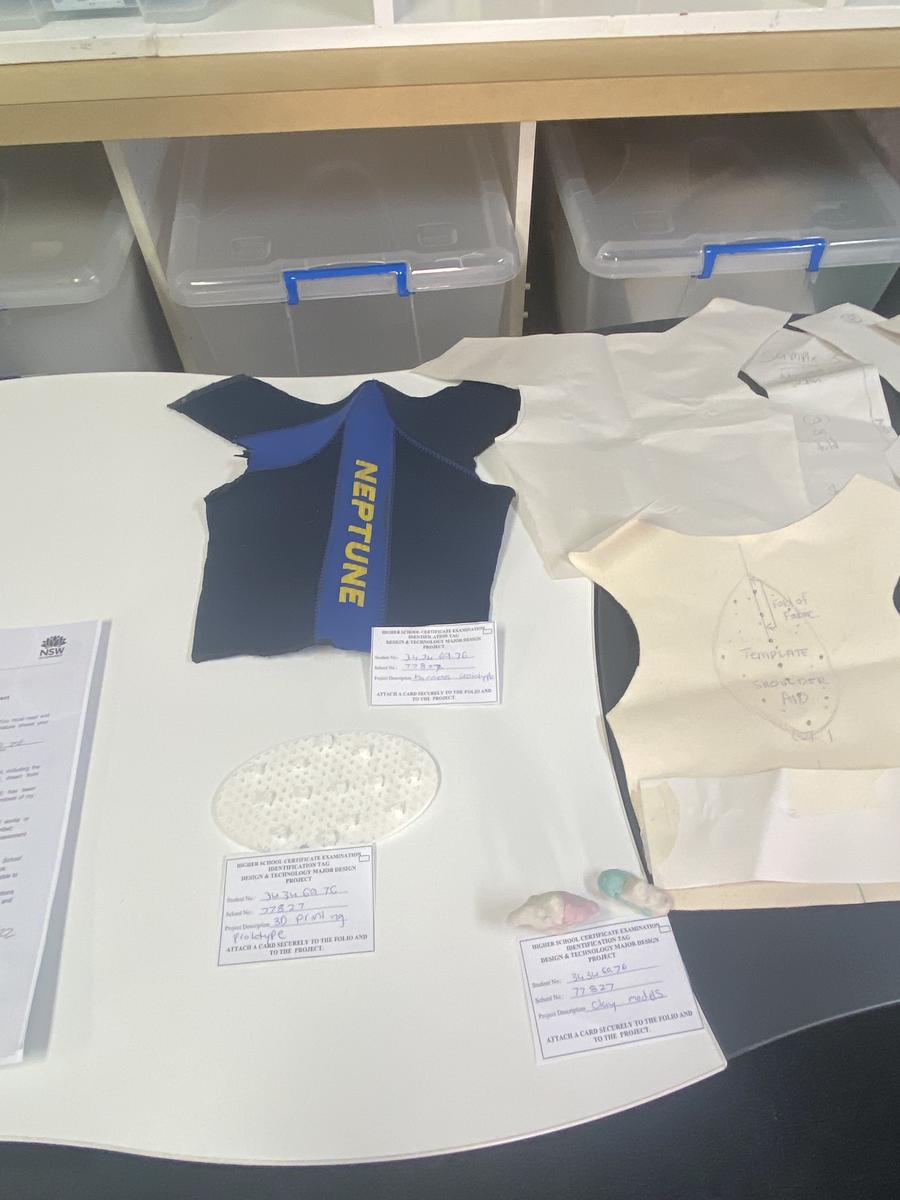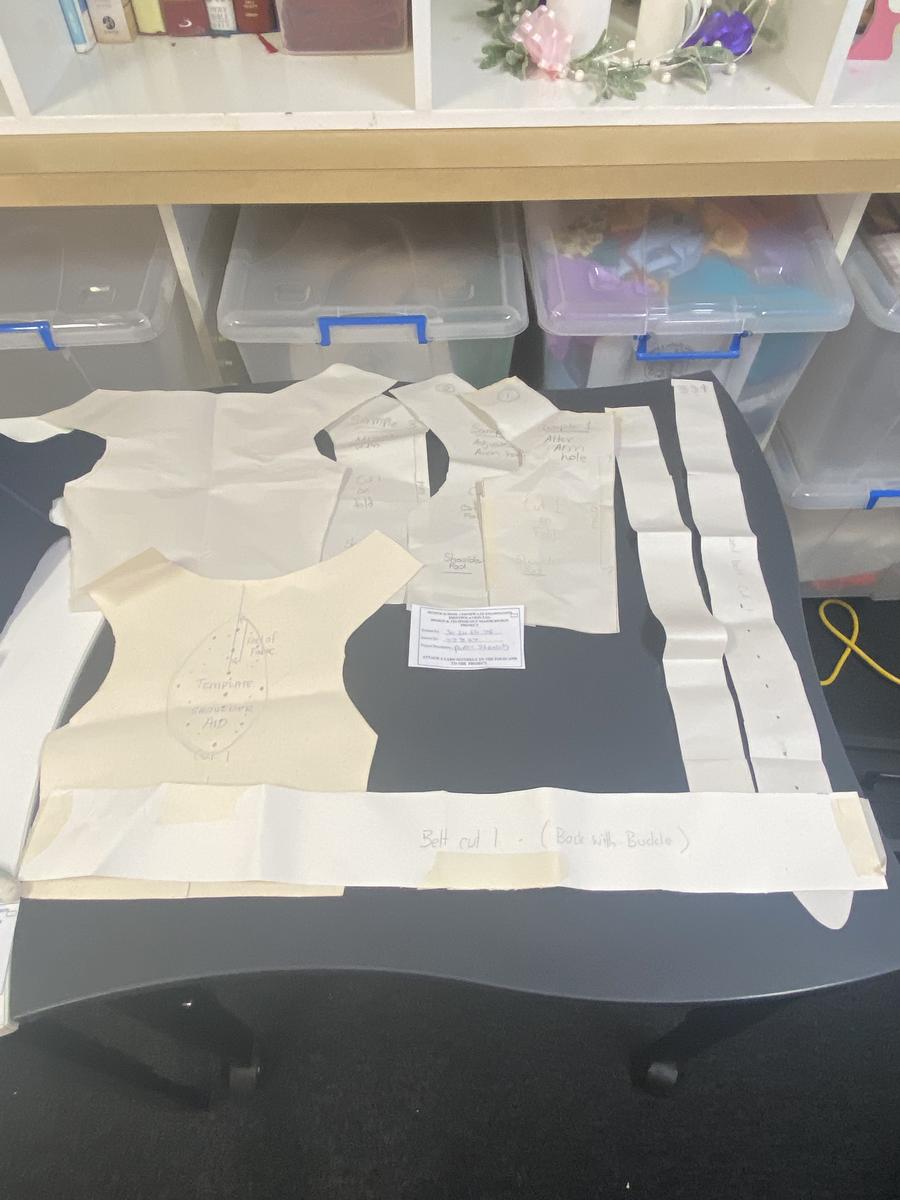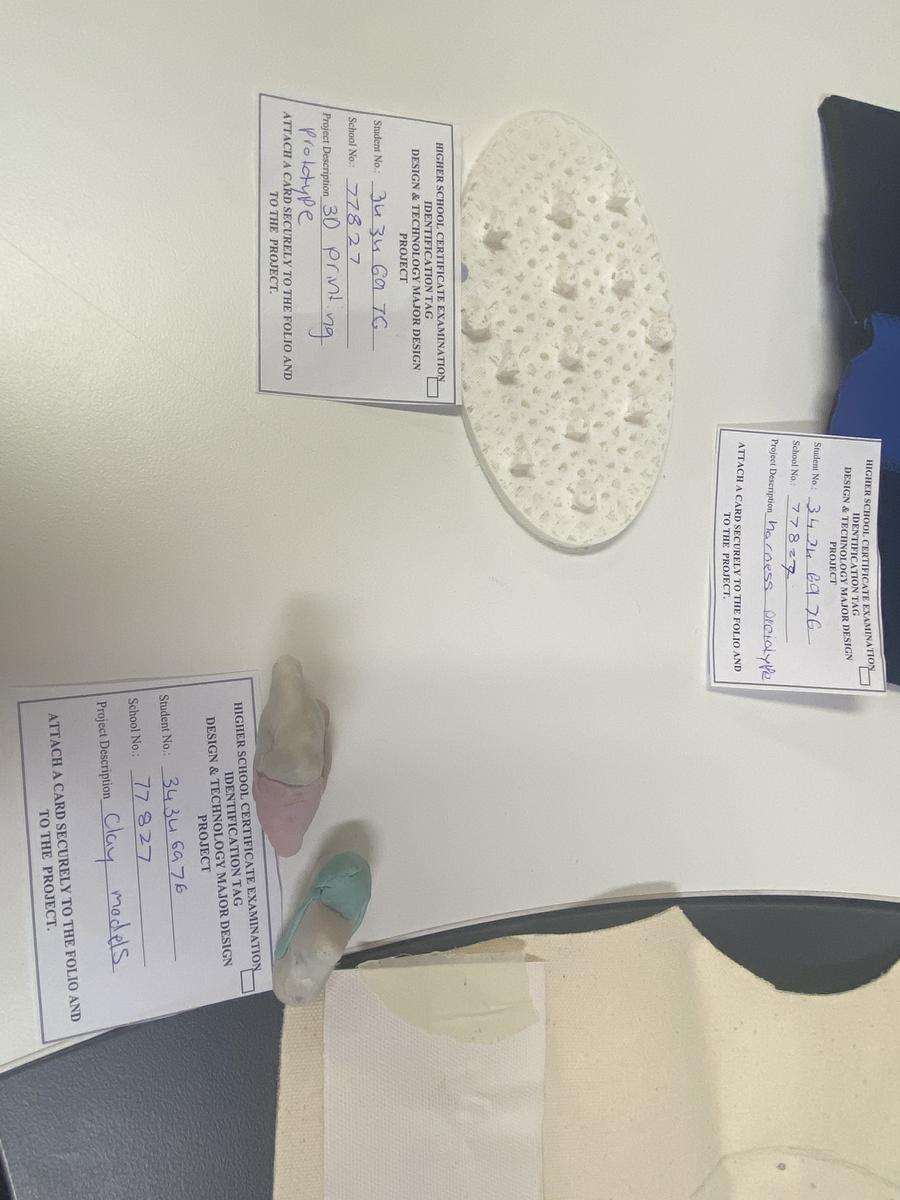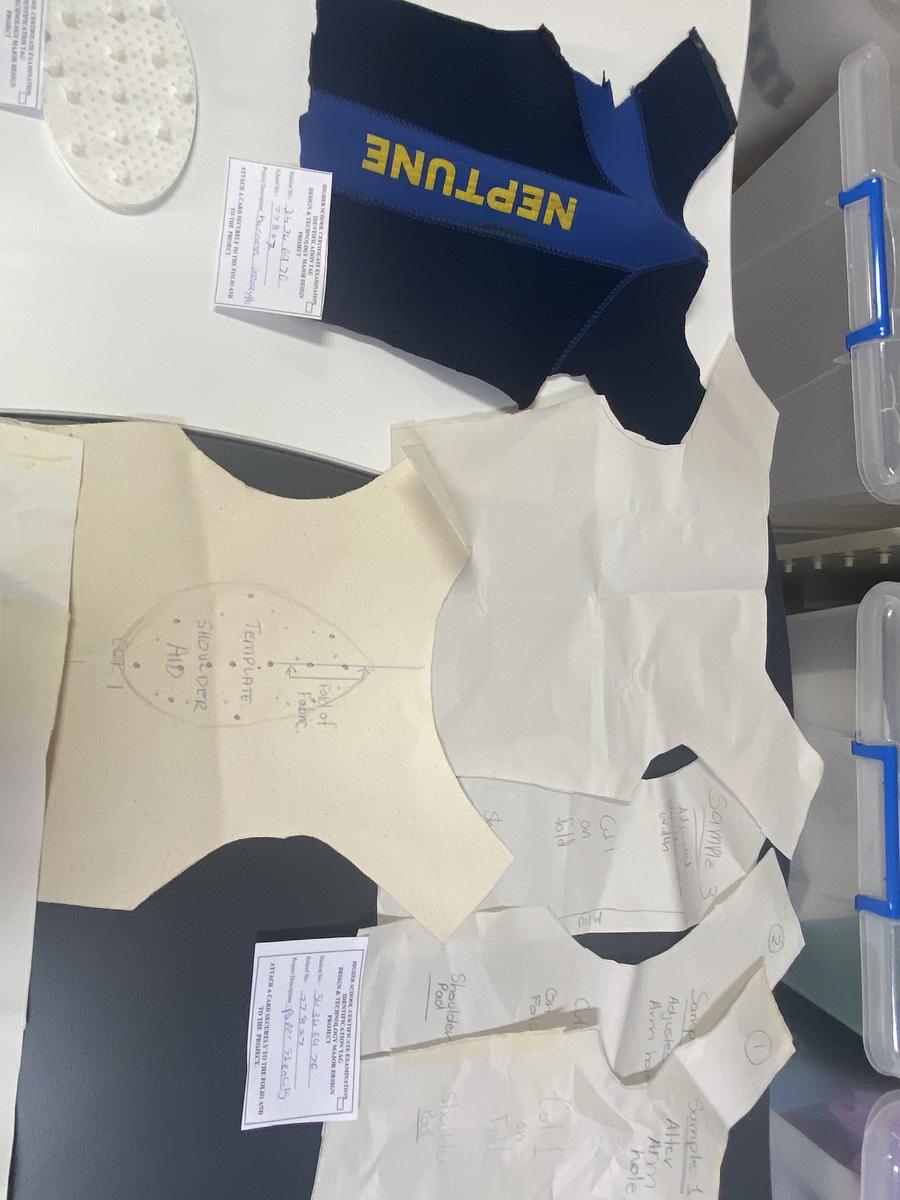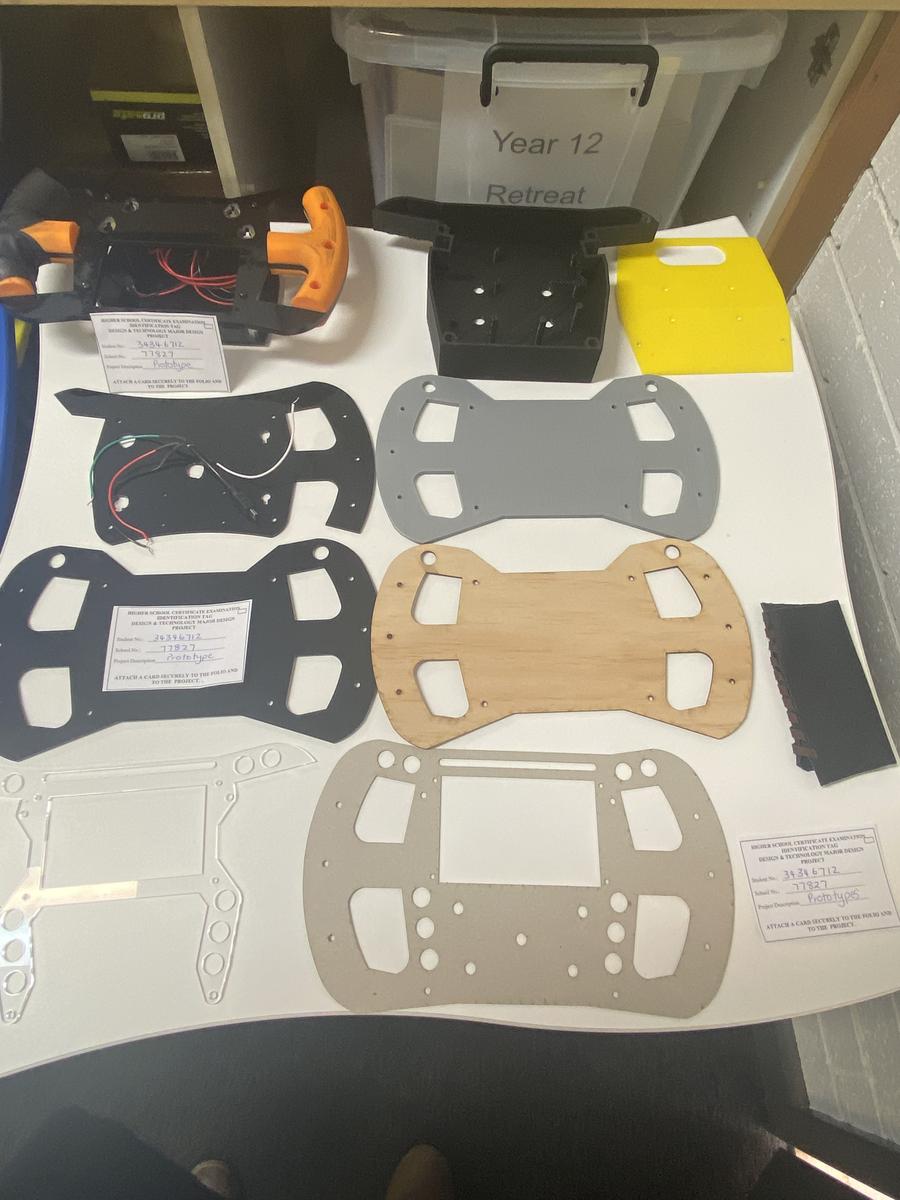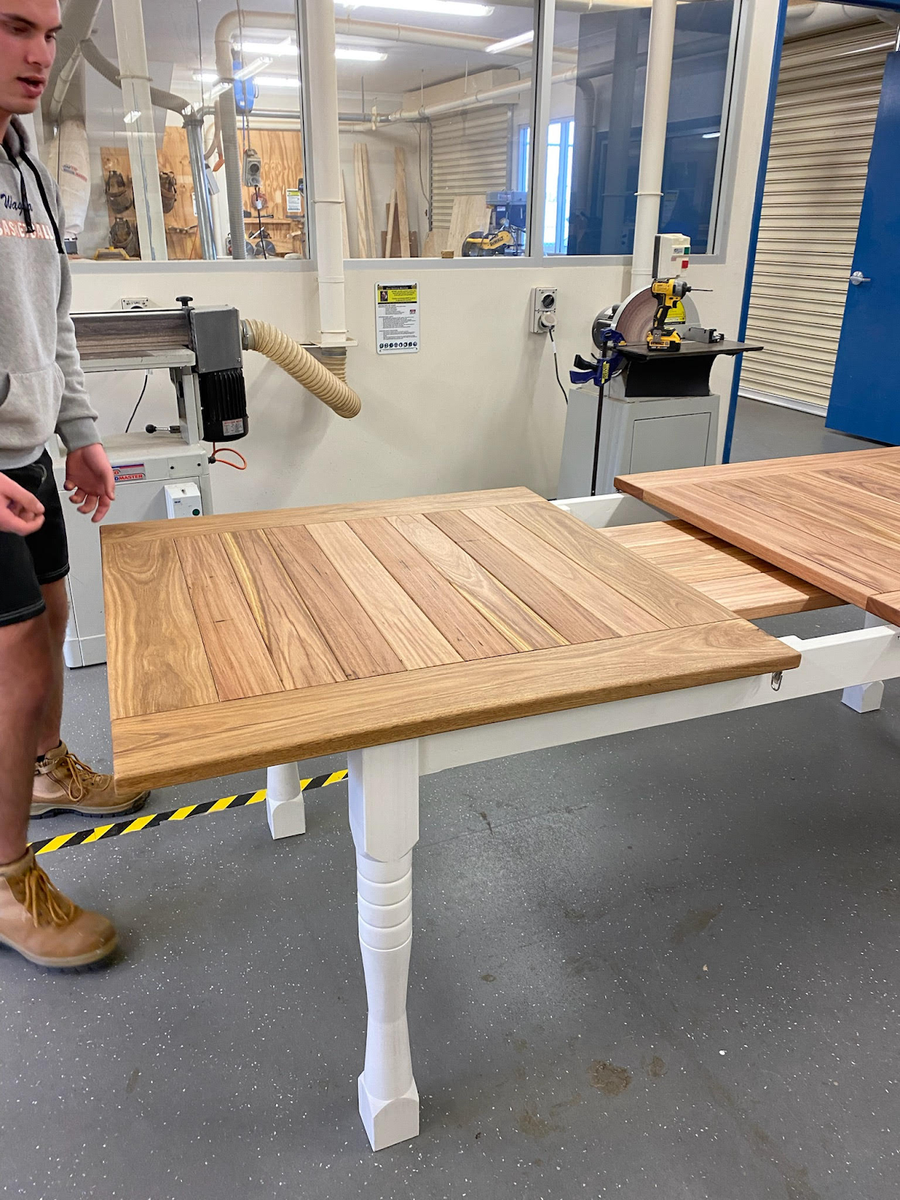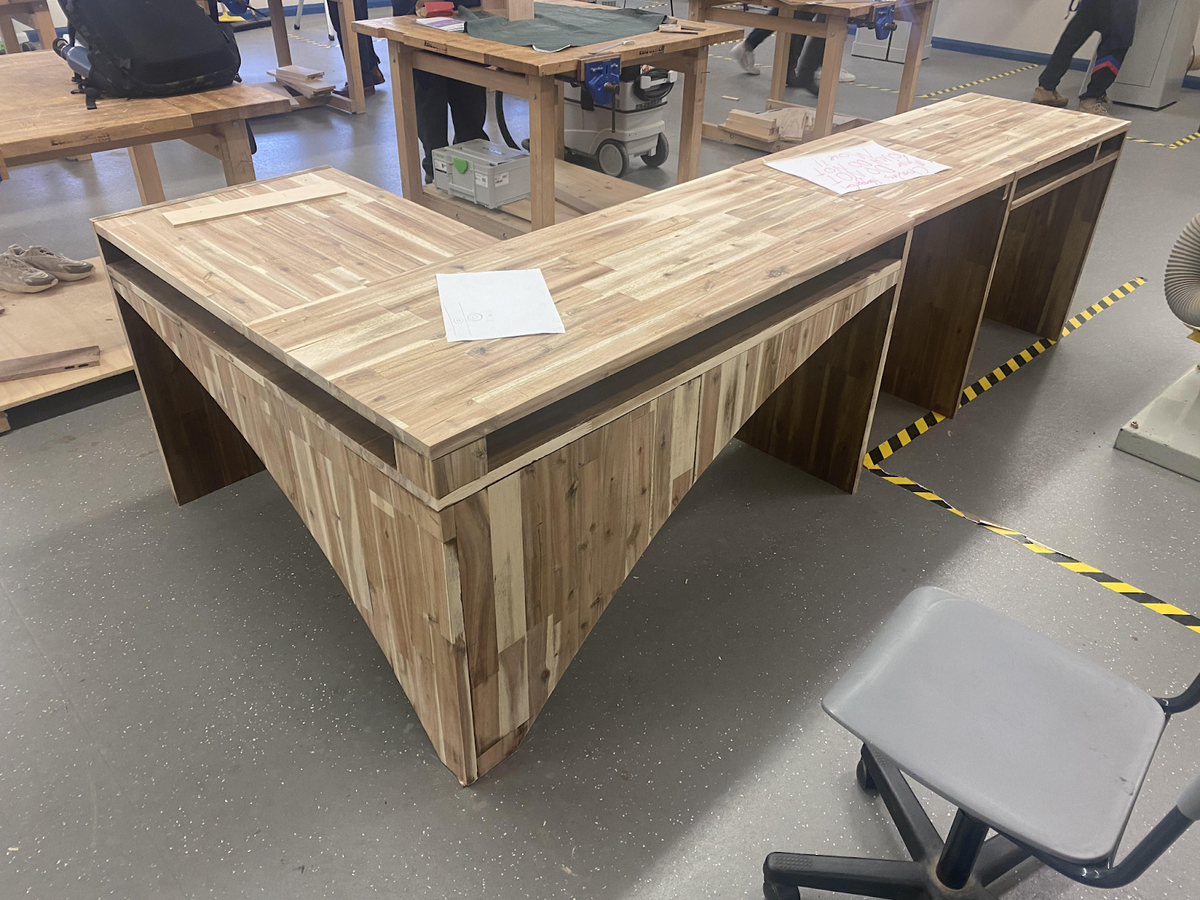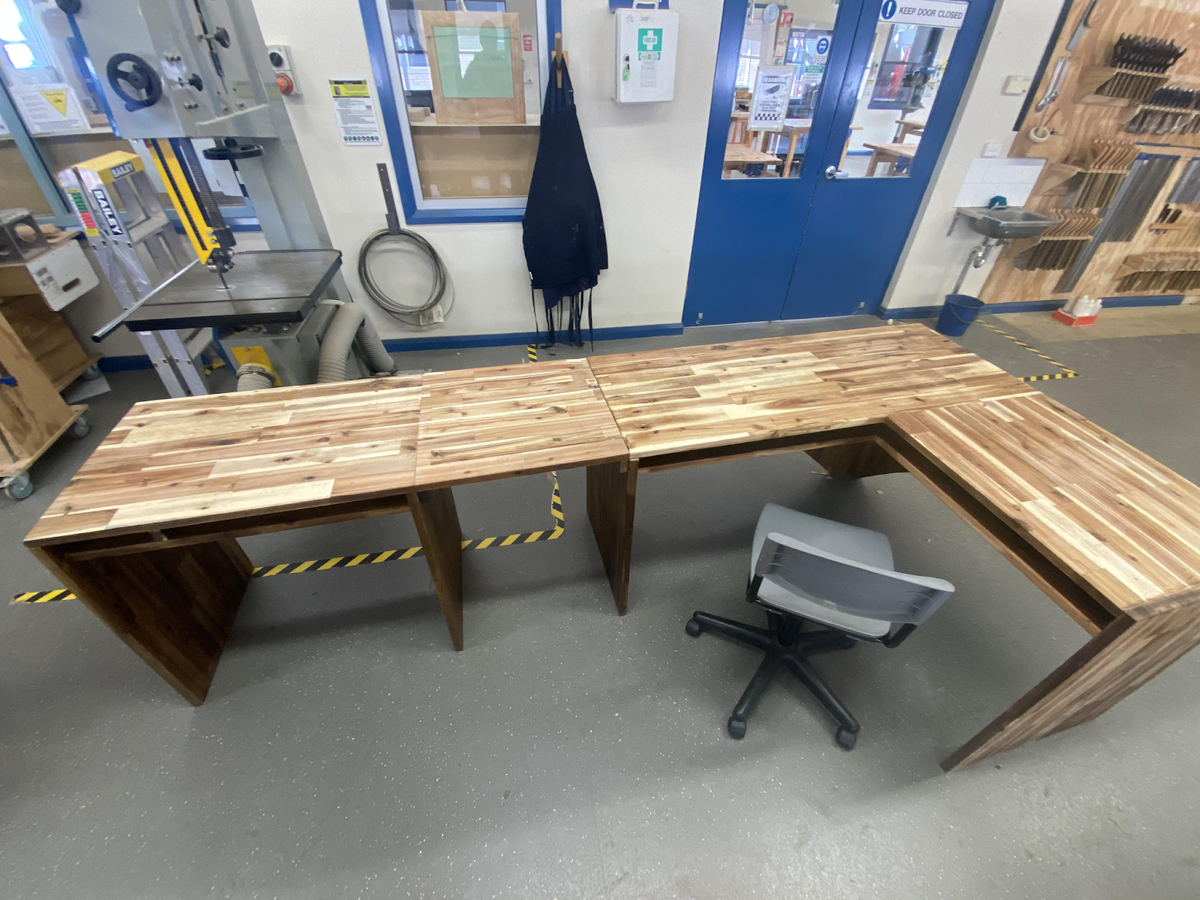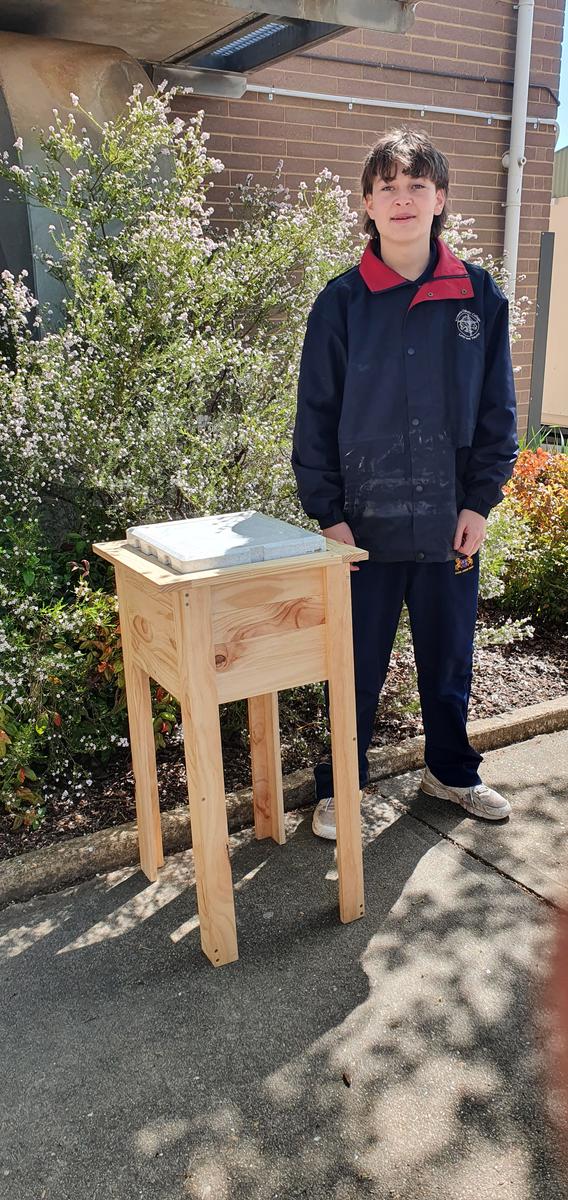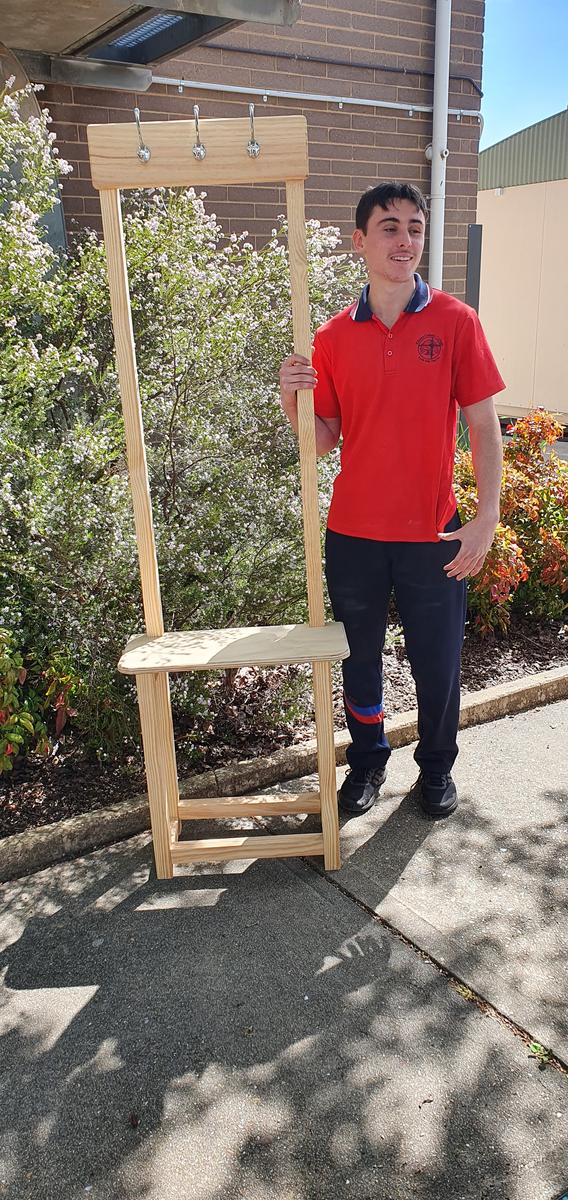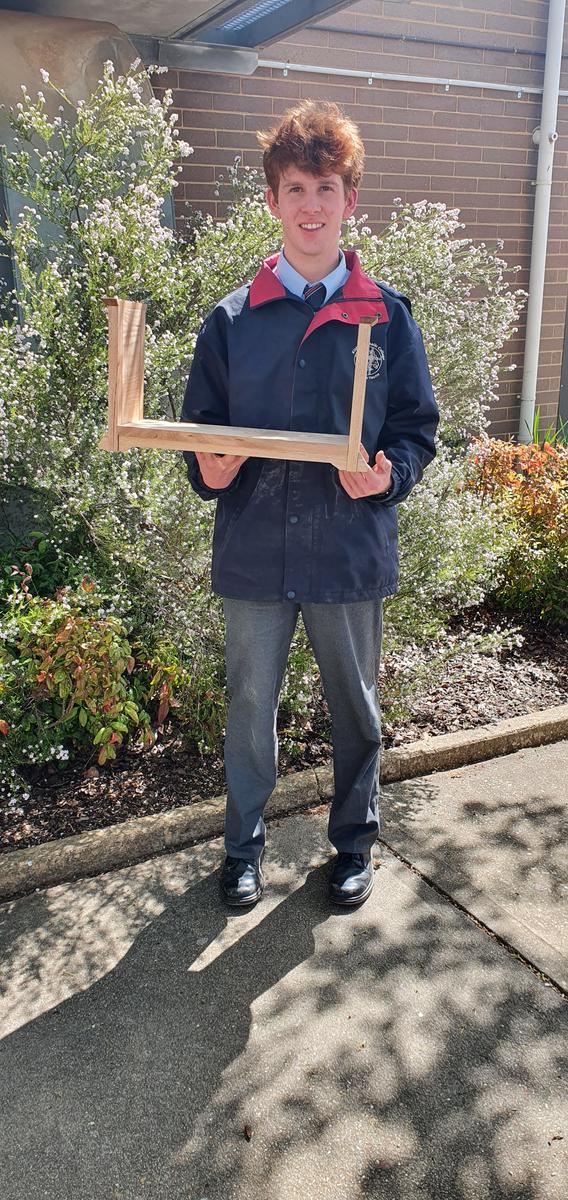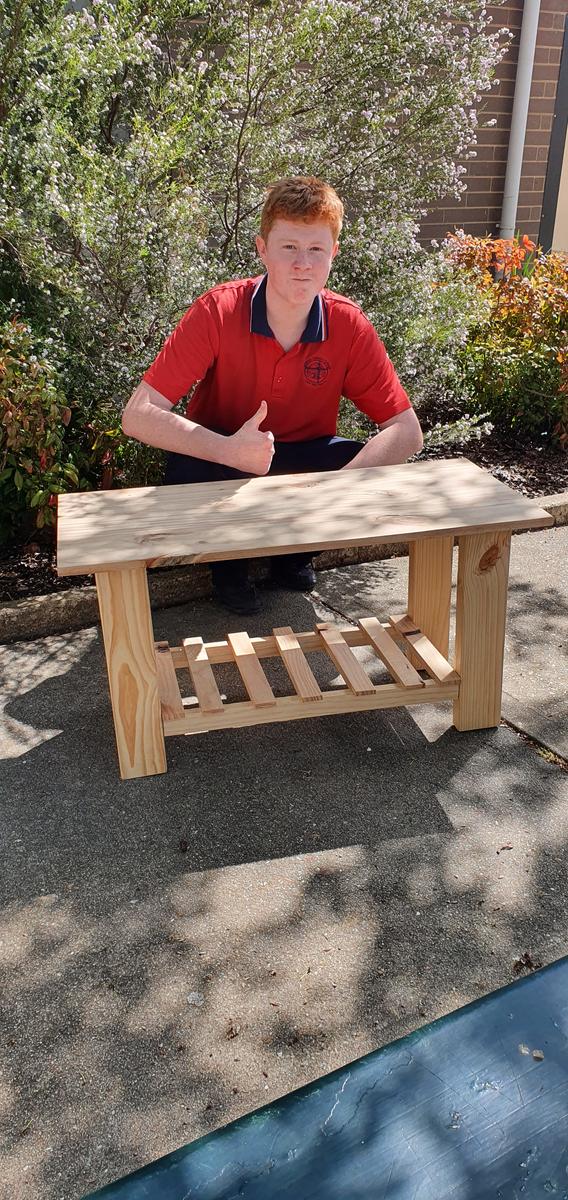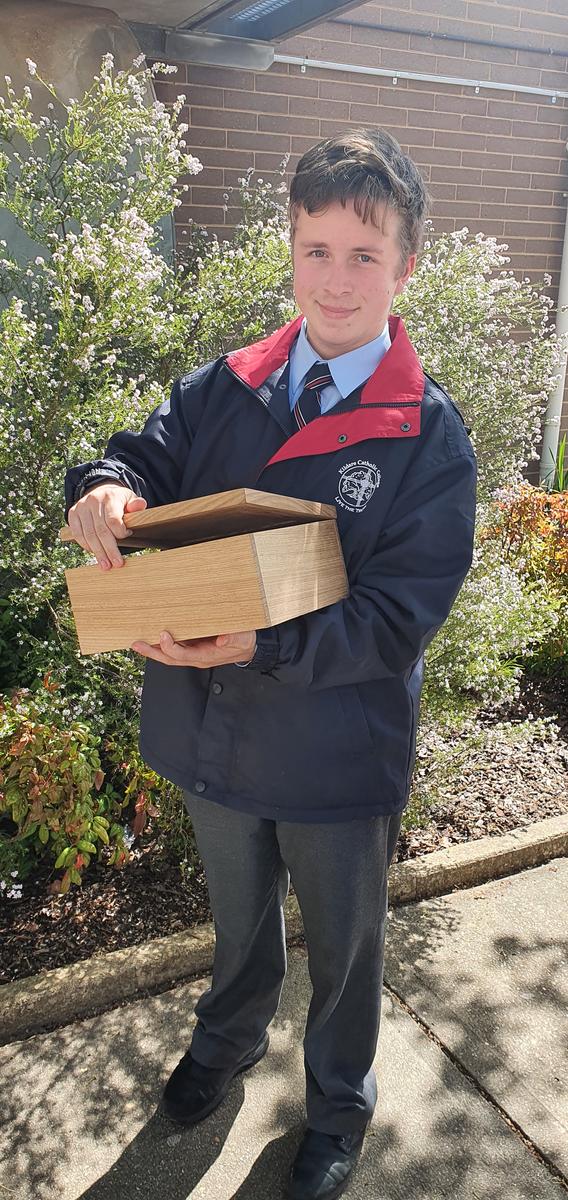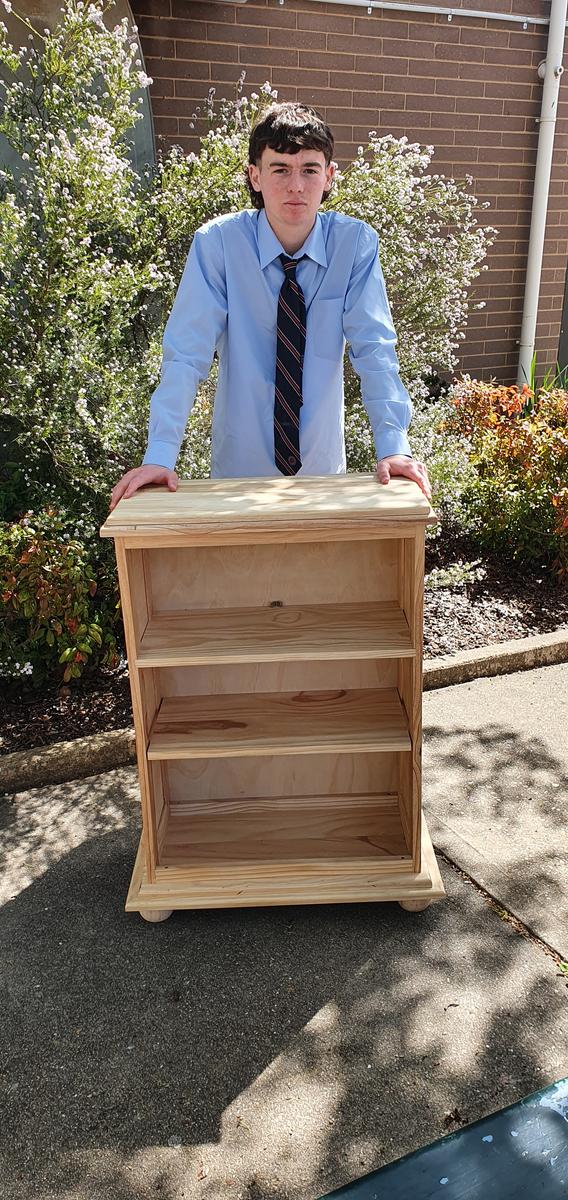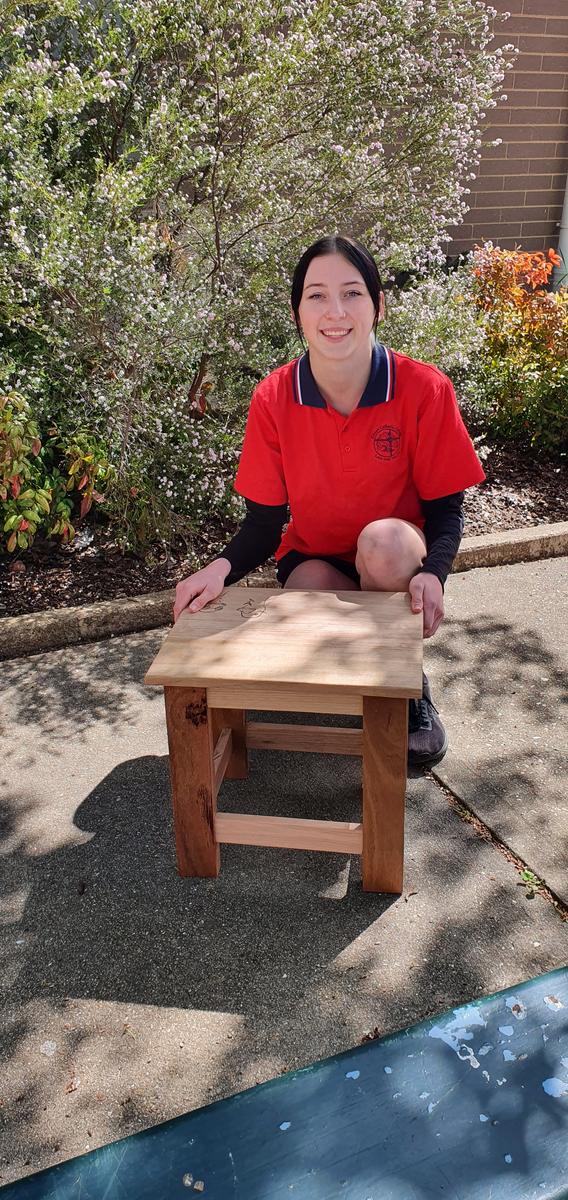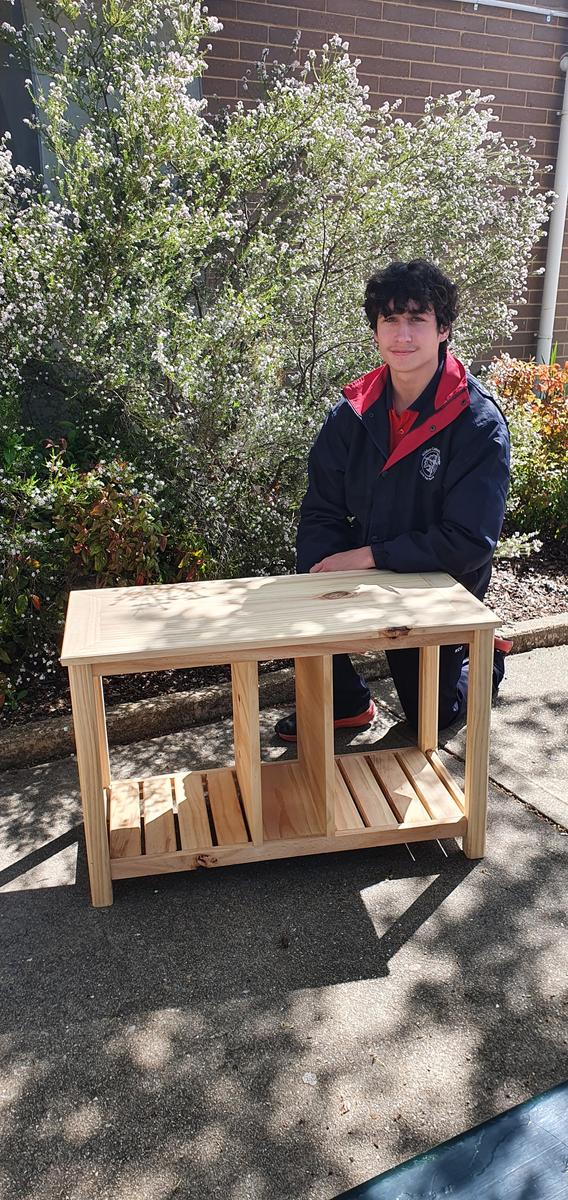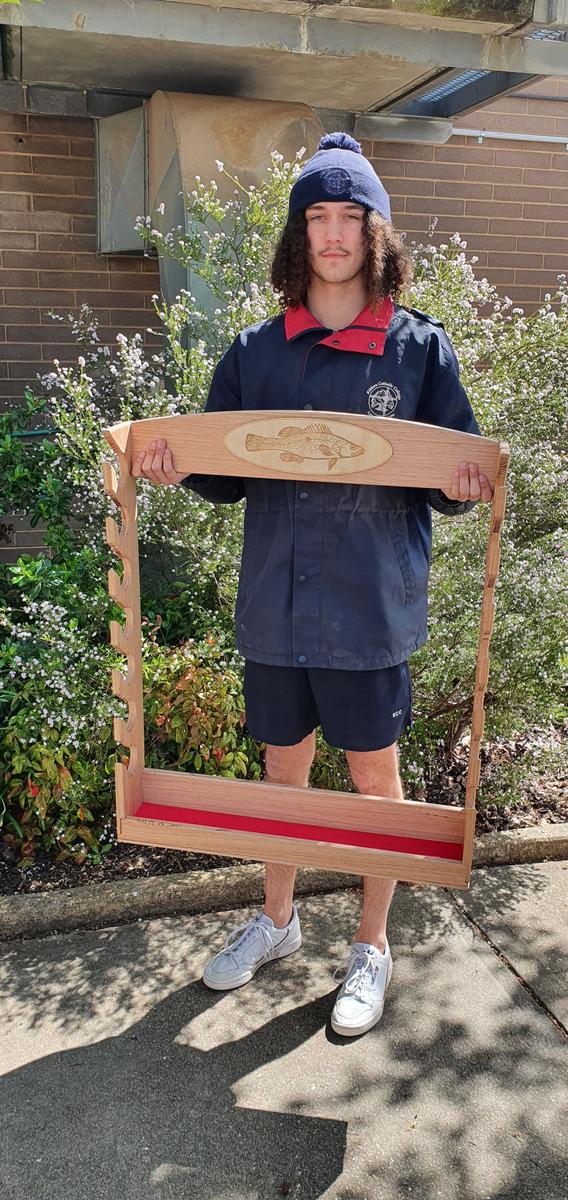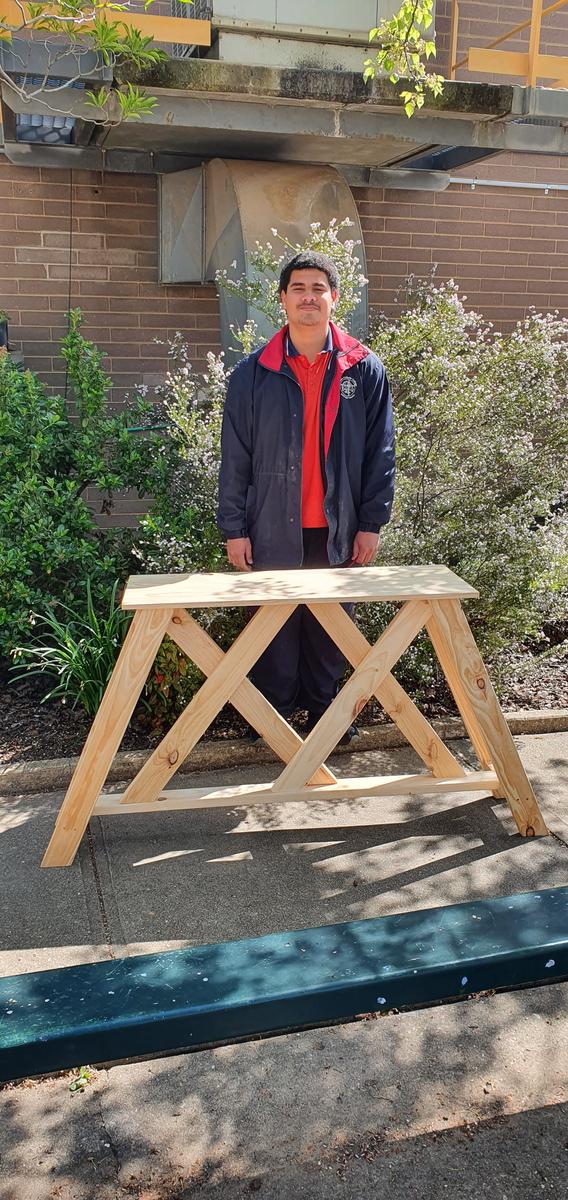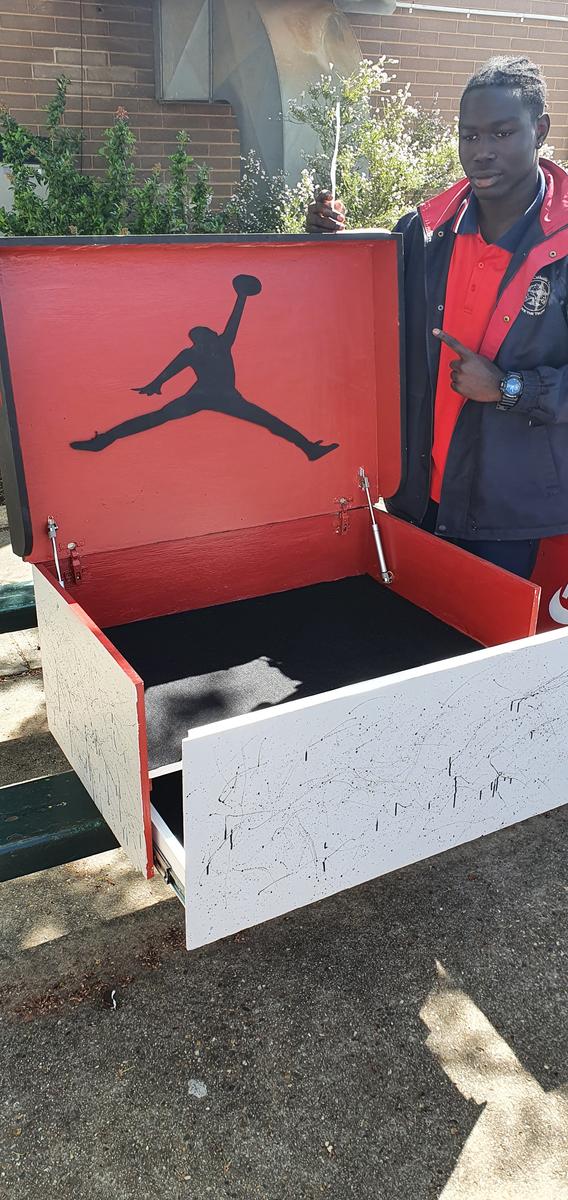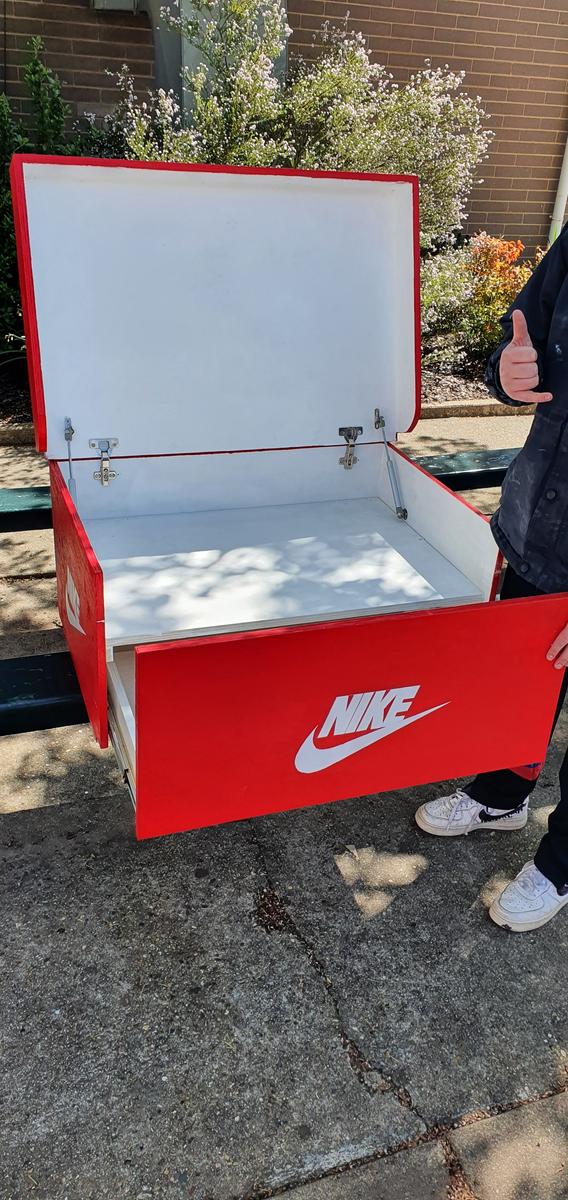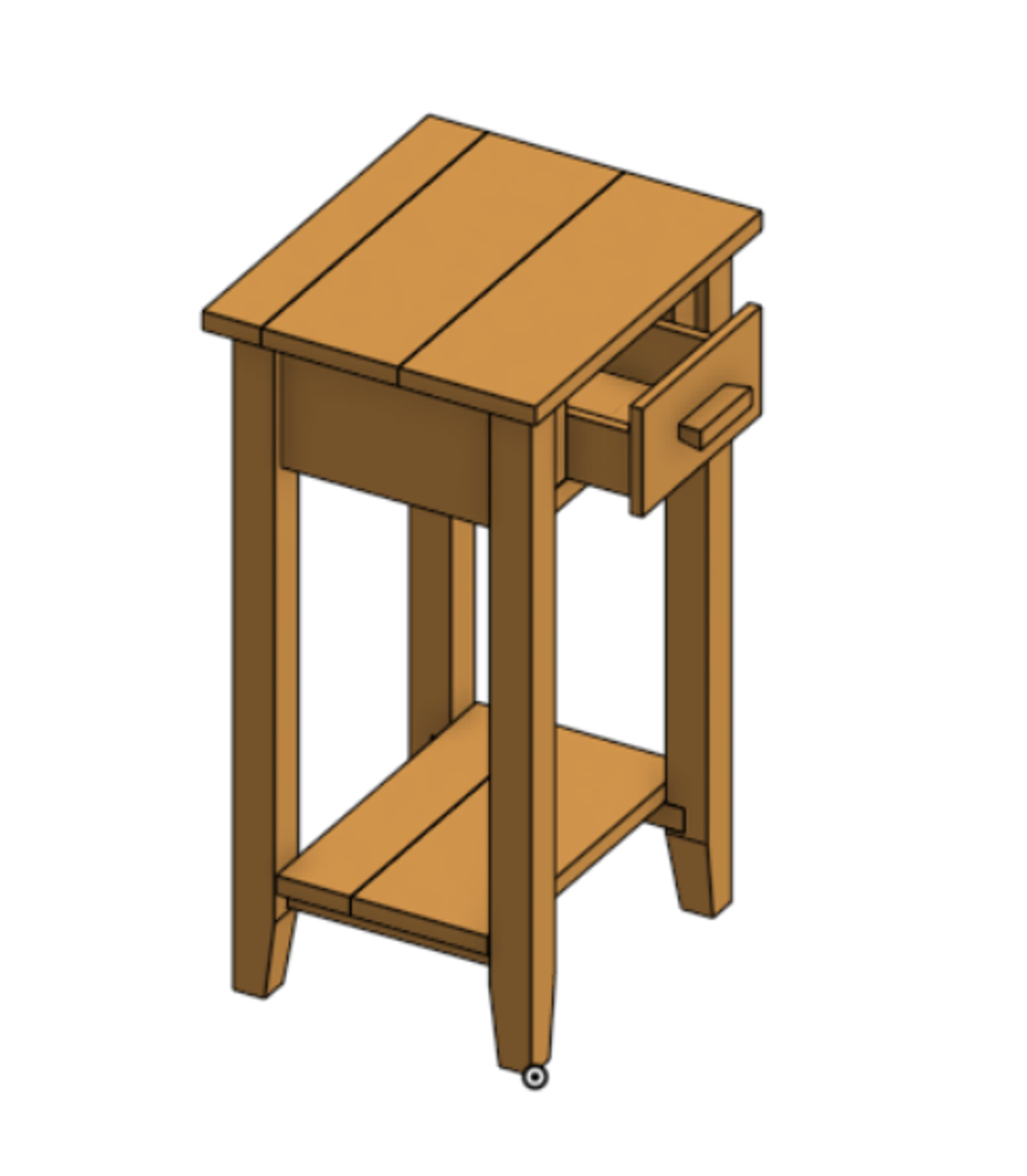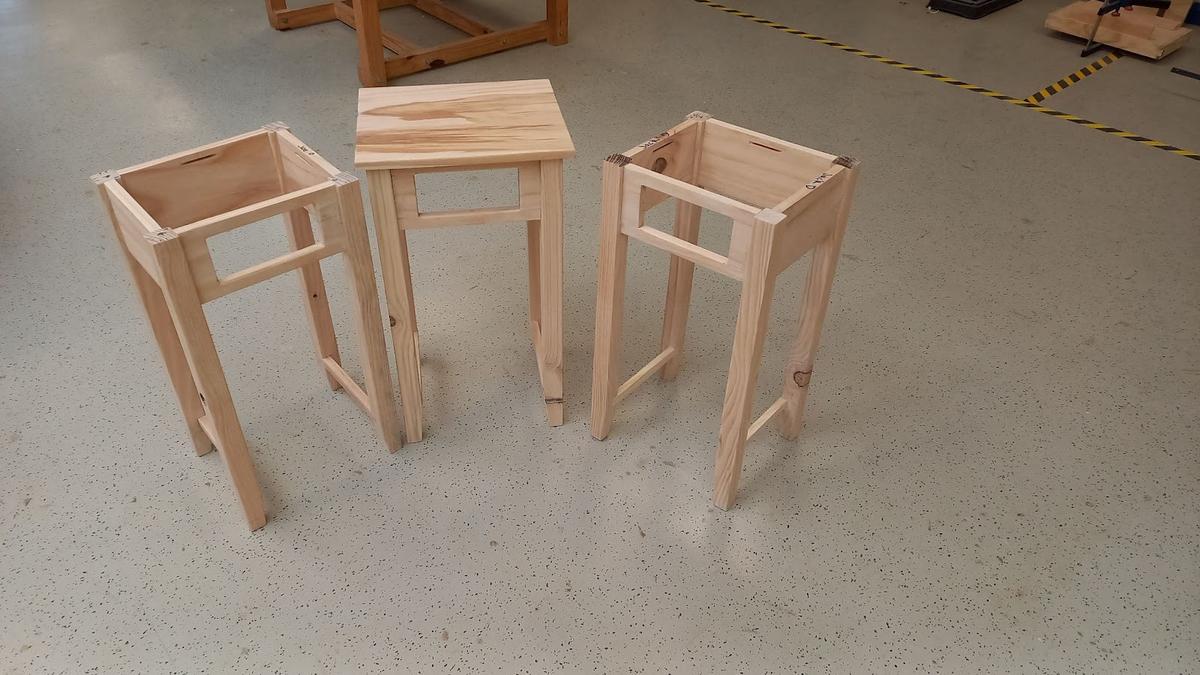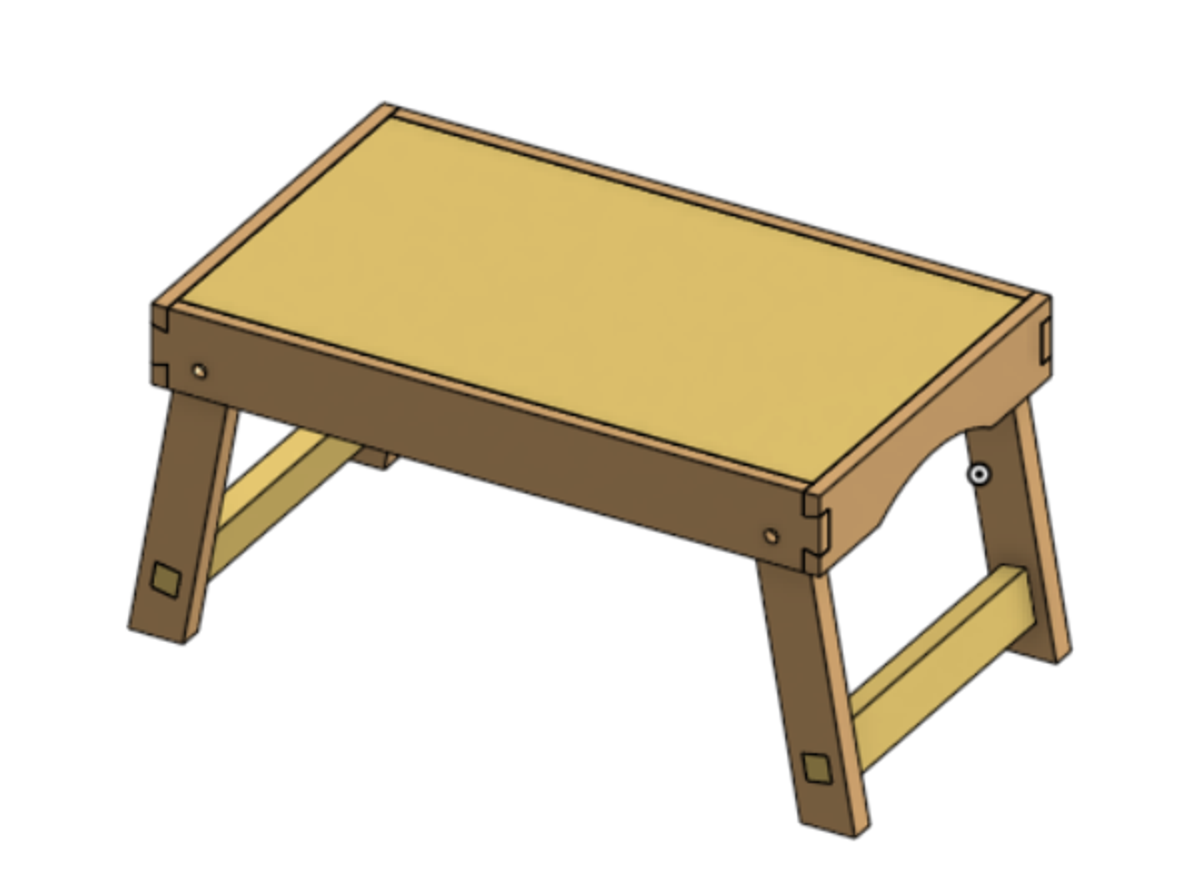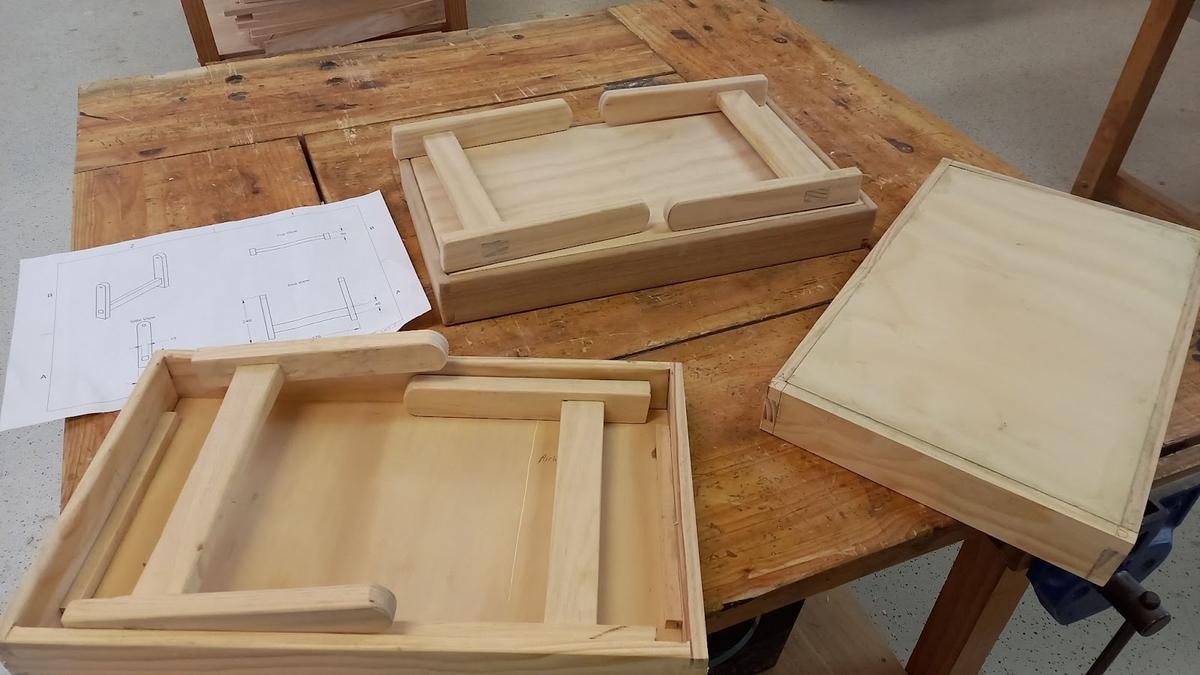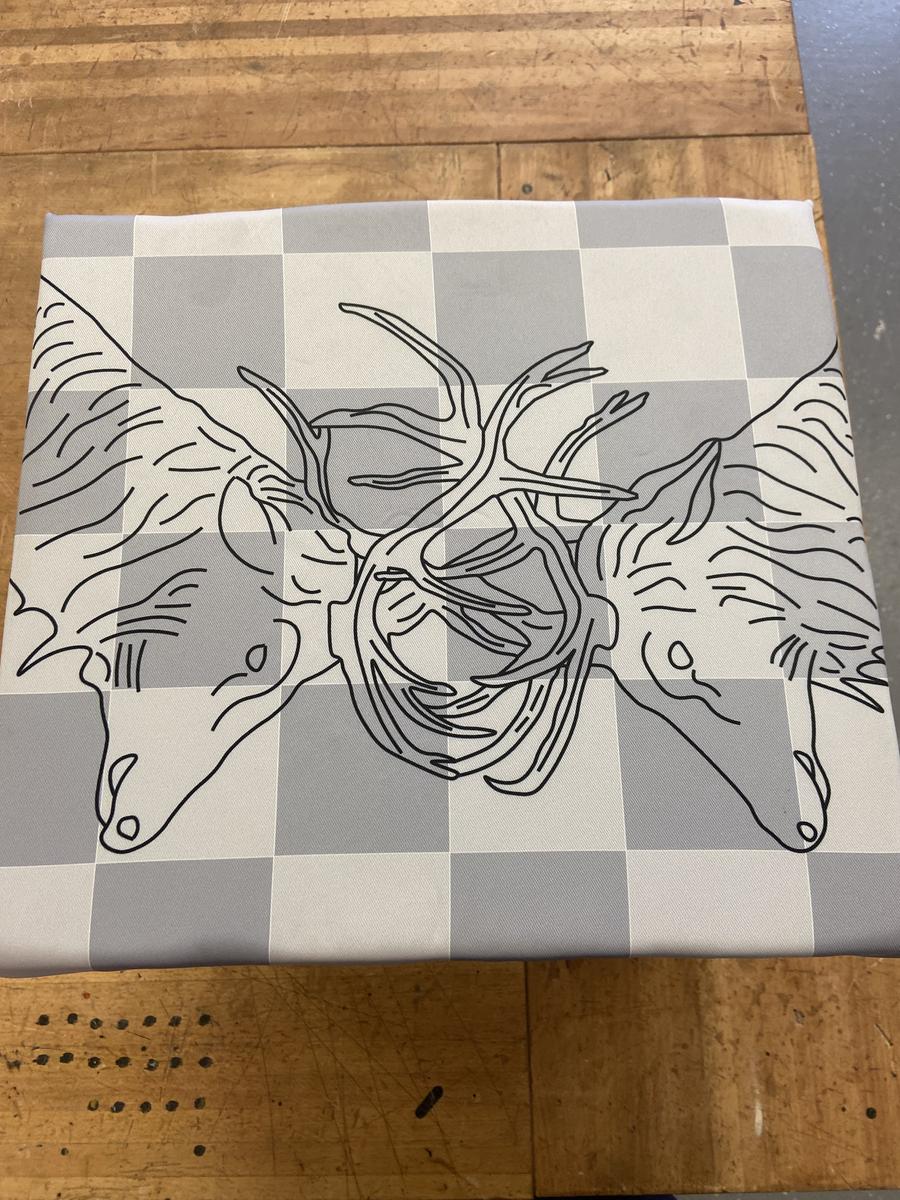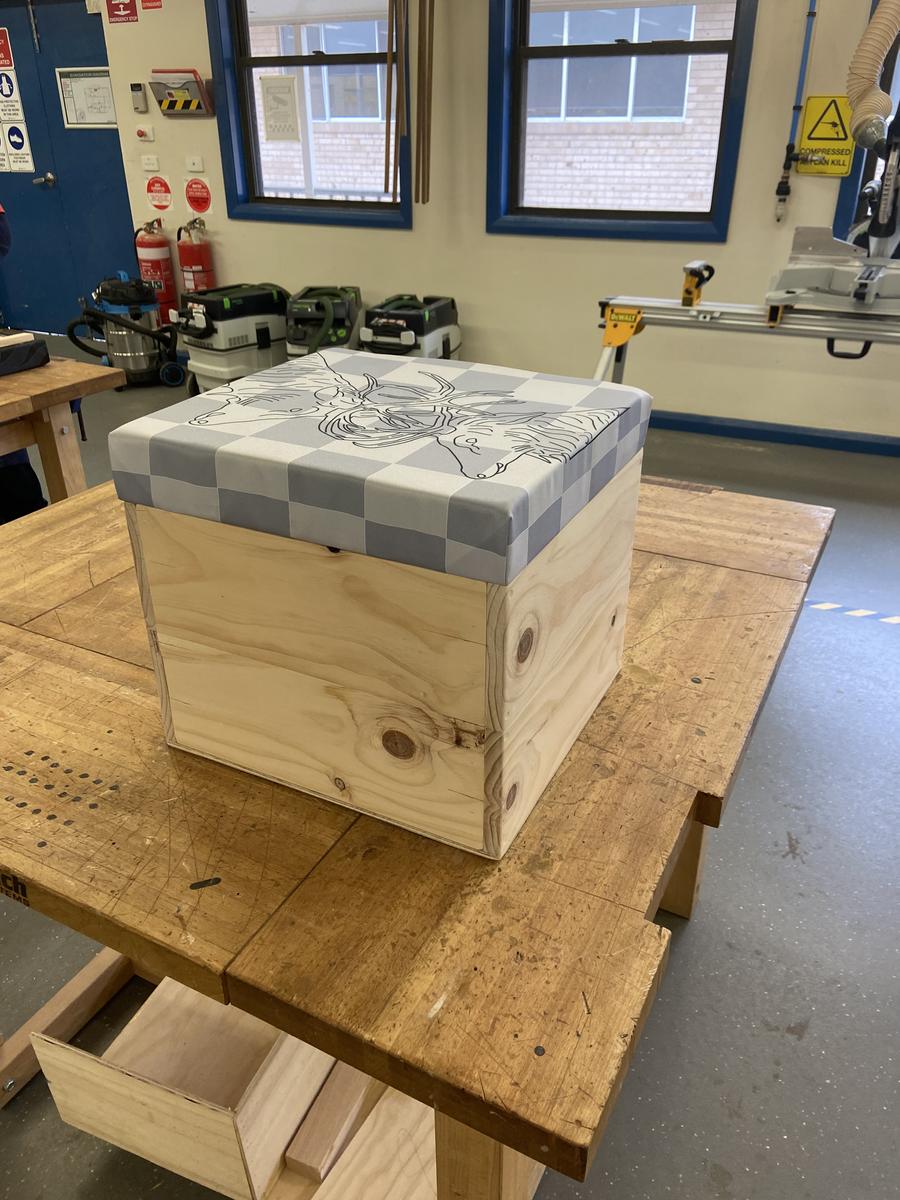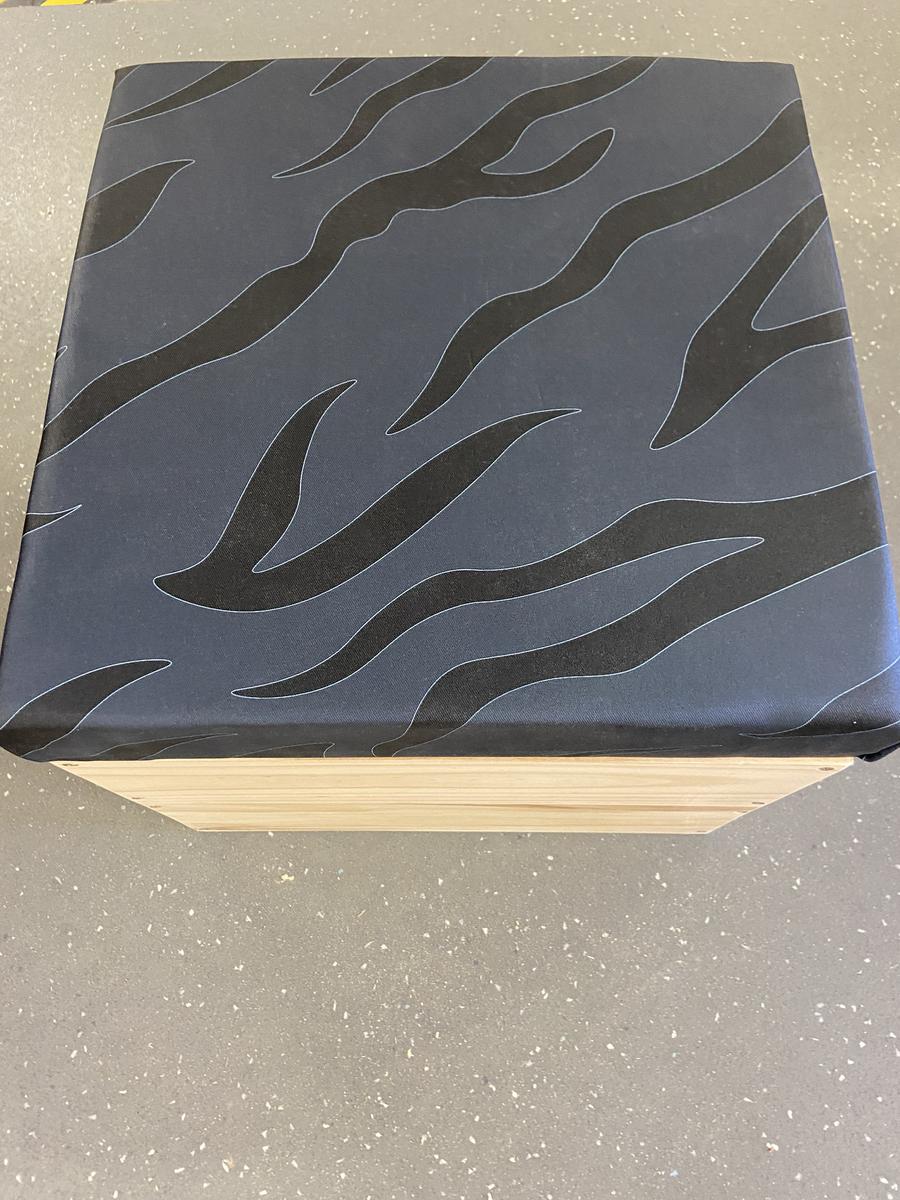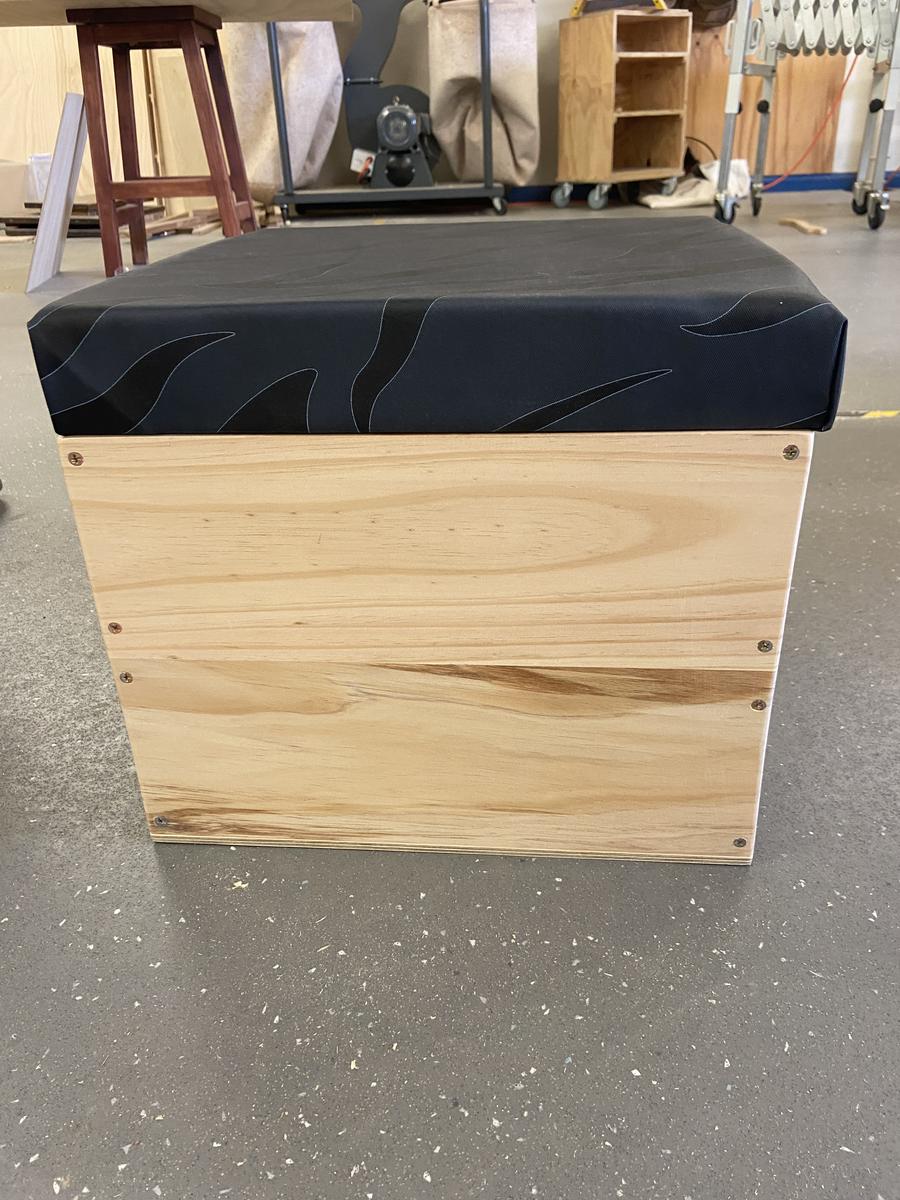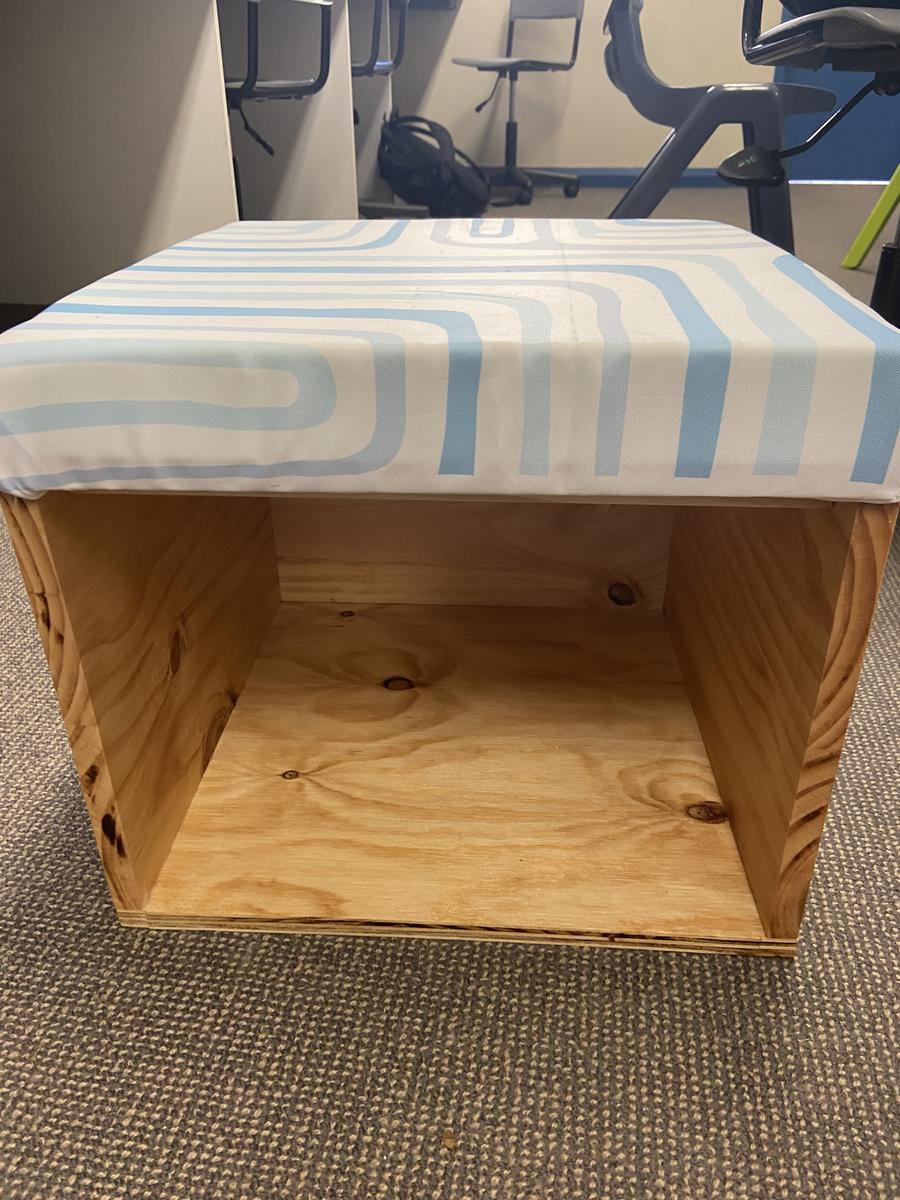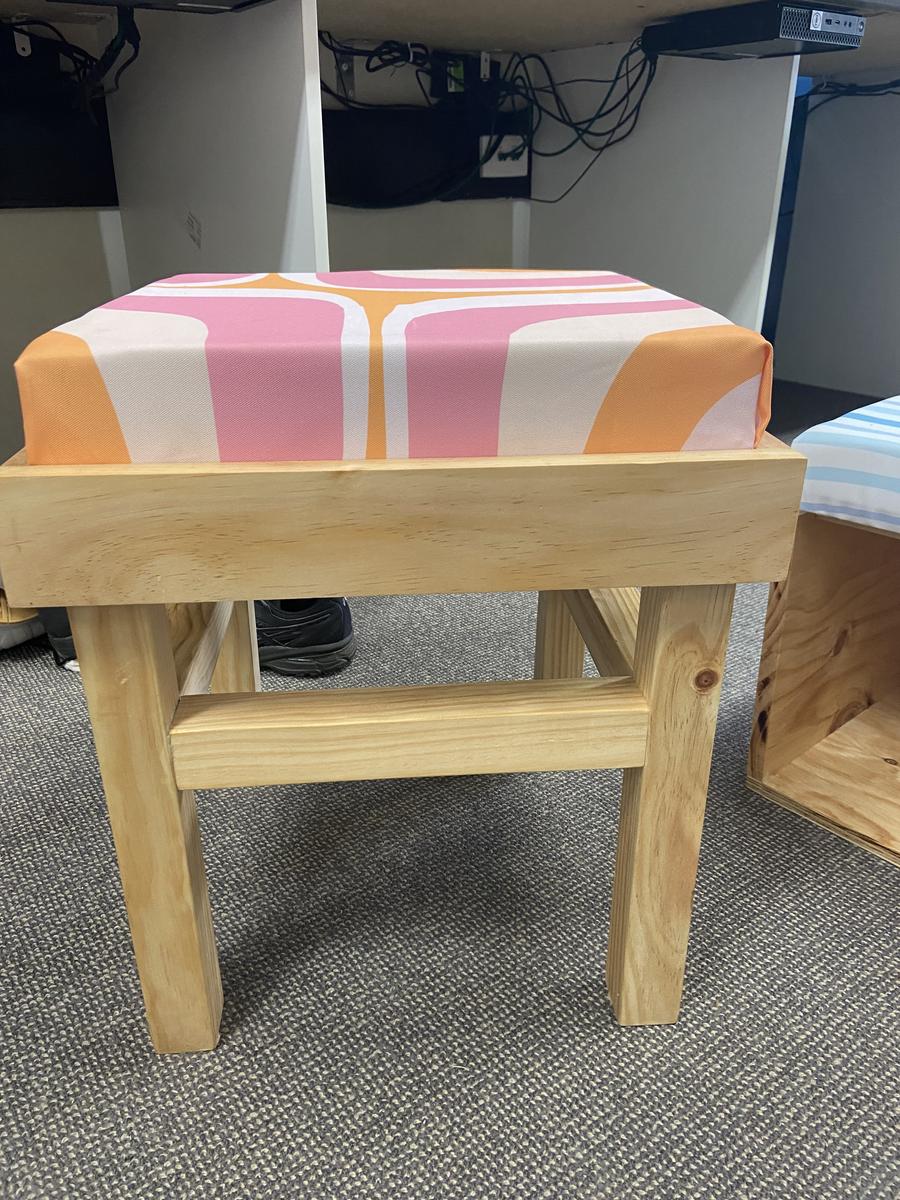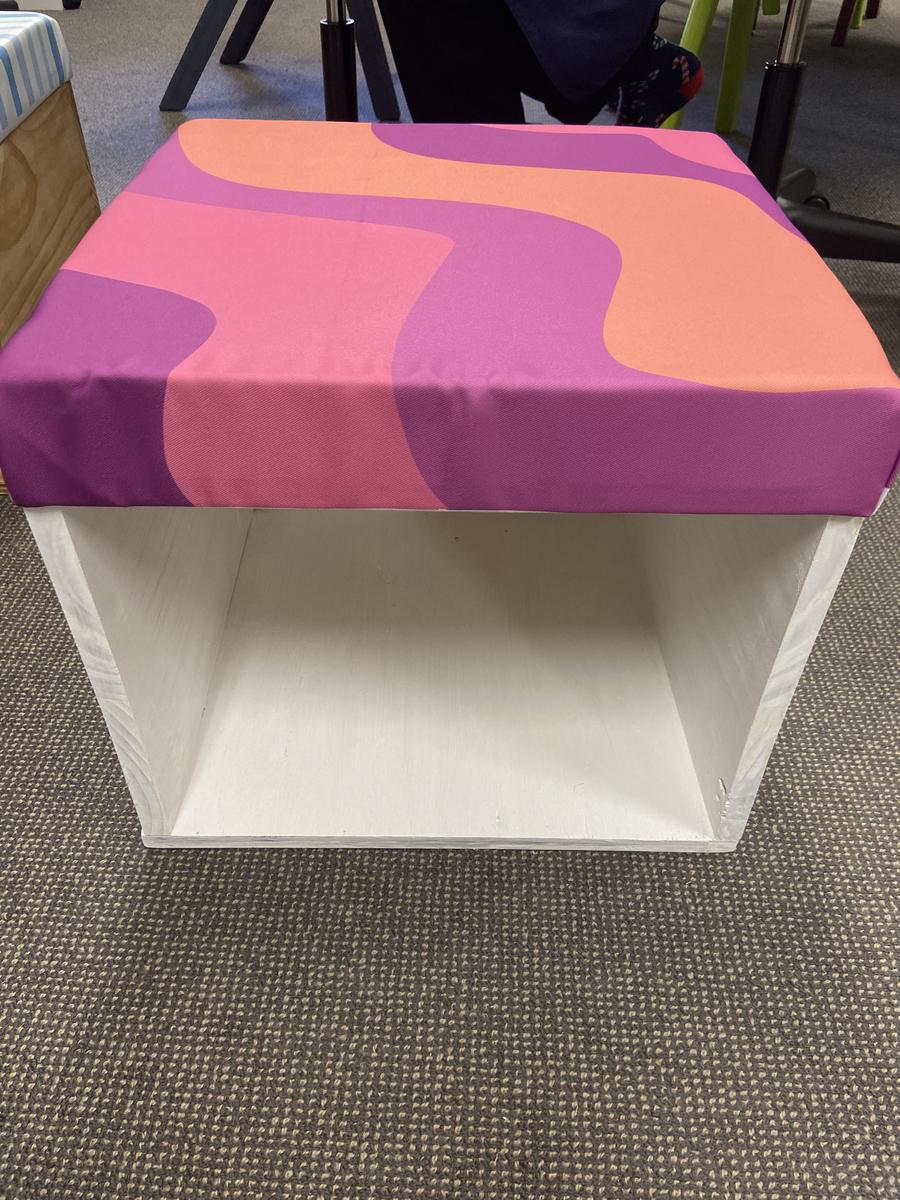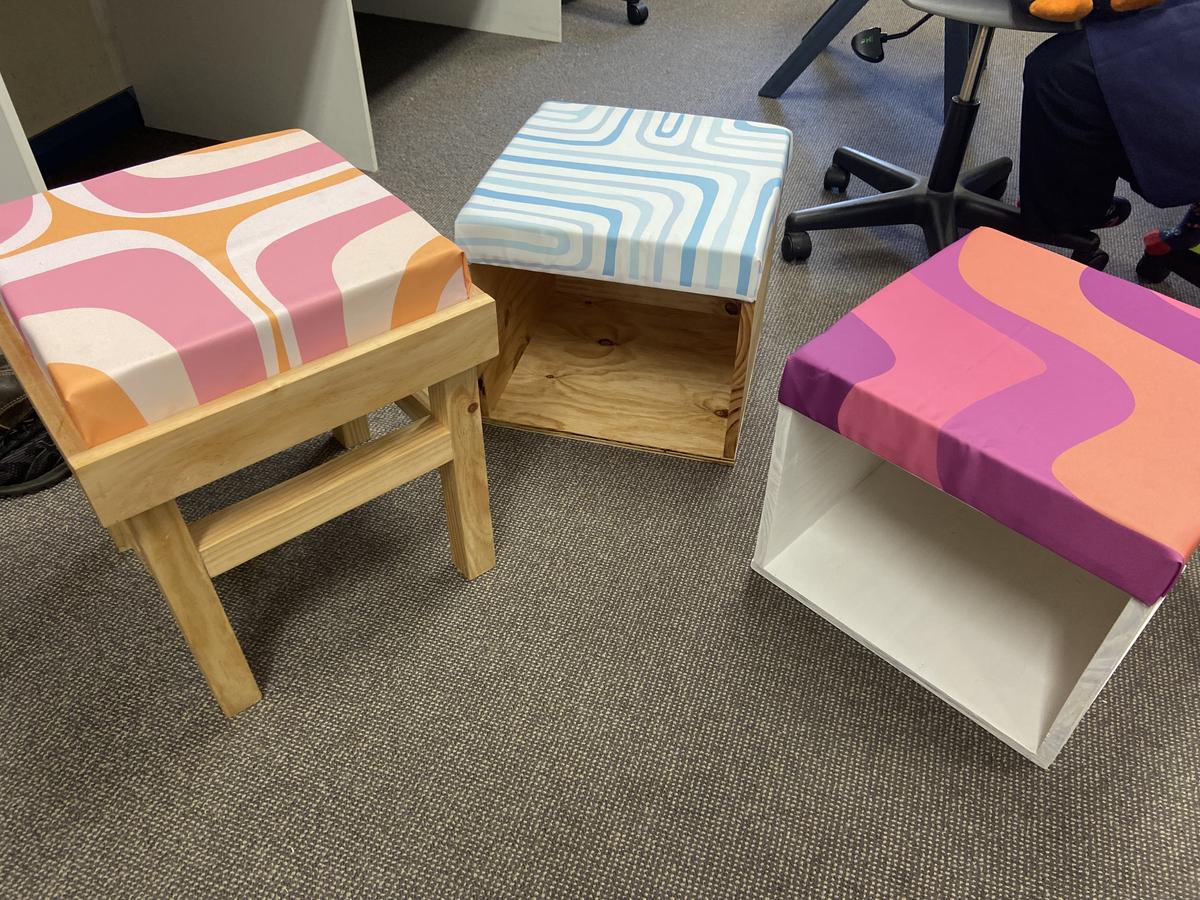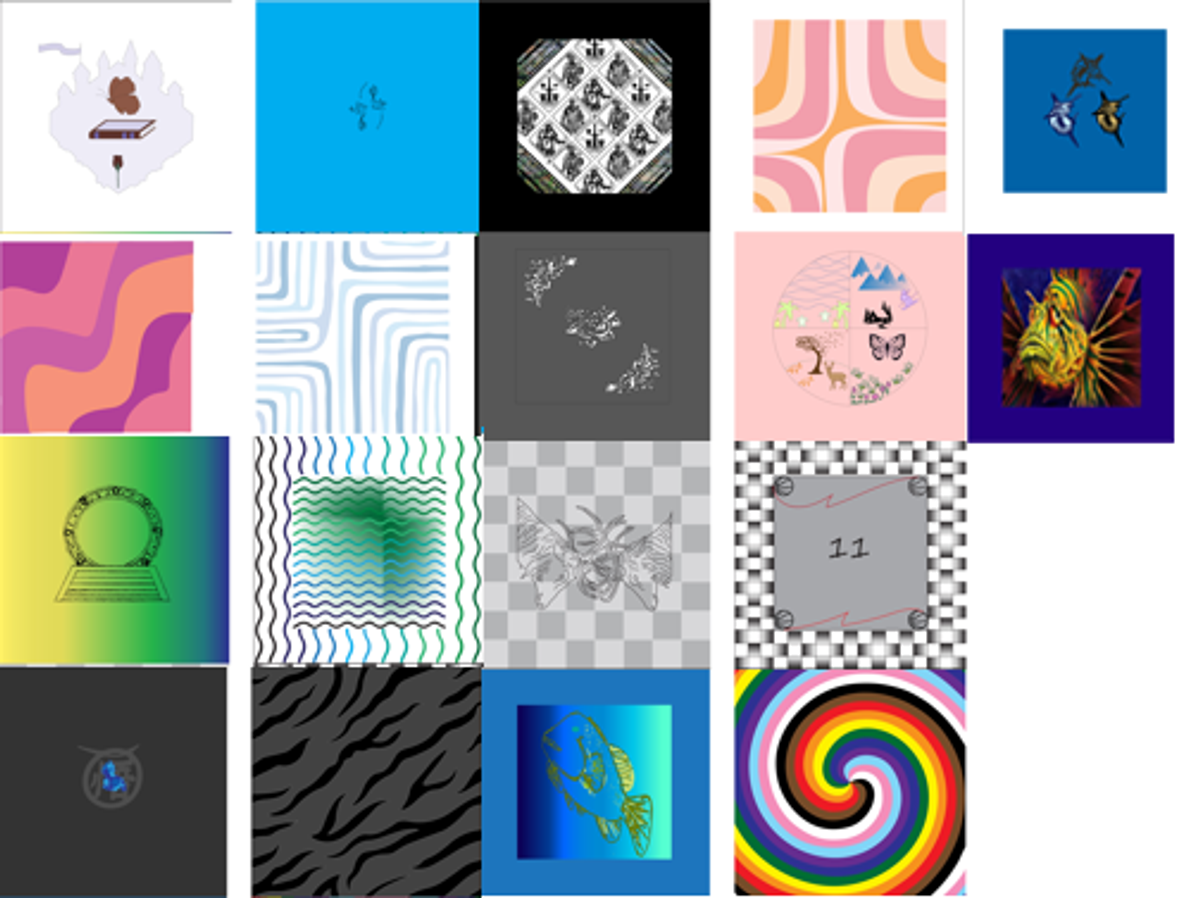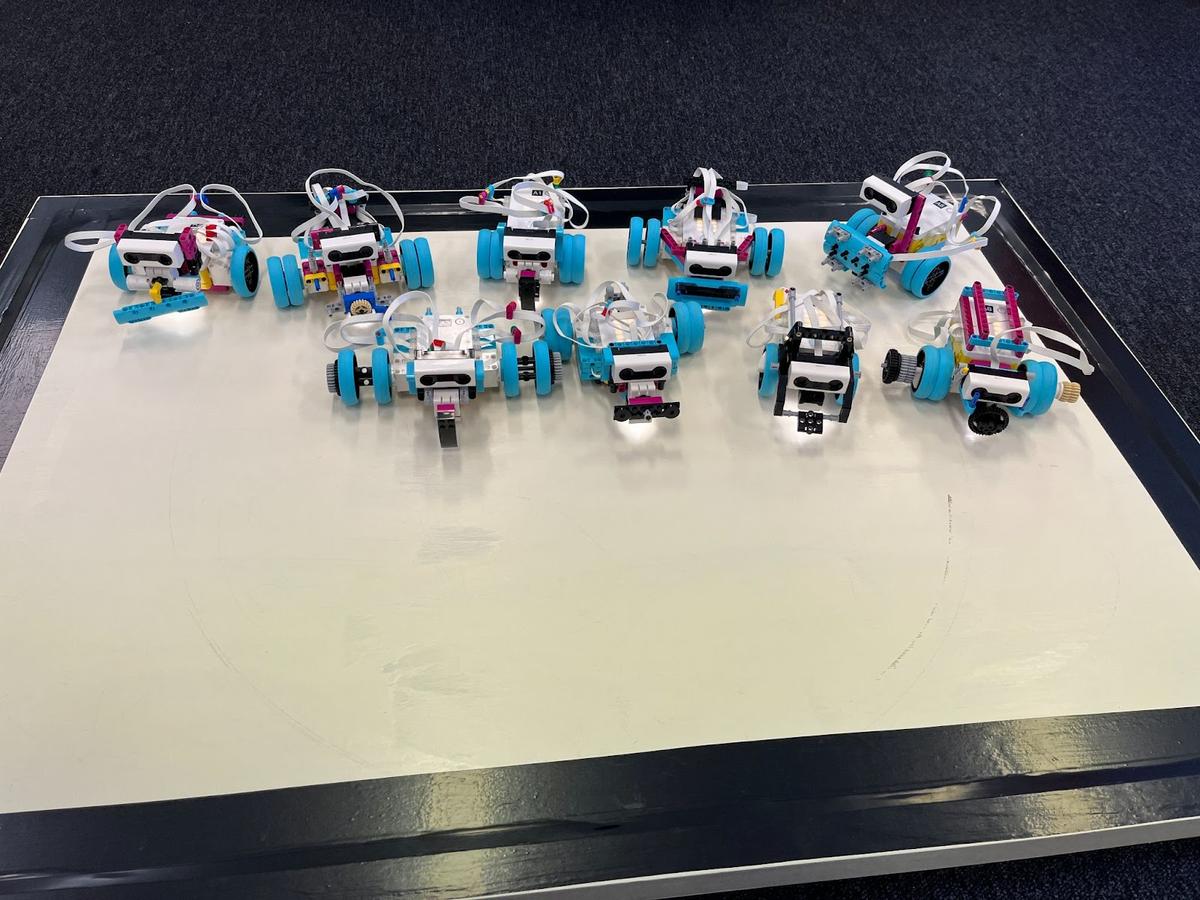Technological & Applied Studies News (Part 1-2)

Year 12 Major Design Projects
Congratulations to the Design and Technology and Industrial Technology Timber (ITT) students who have completed, and submitted, their major projects for the 2022 HSC. External markers have attended the College to mark the students' work.
Congratulations to the ITT students, Cooper Clark and Charles Heggaton for the many hours they have invested in their projects. Well done. Thank you to Mr. Kennedy (ITT Teacher) for assisting and guiding the students to complete their major works.
Congratulations to the Design and Technology students for their final push to complete and set up their Major Designs Projects ready for HSC marking. Well done to Sarah Bowering, Manni Jip, Charlotte Moloney and Victoria Rockliff.
Thank you to all the teachers who assisted the students in various ways to get them across the line, your time and efforts are greatly appreciated.
We wish the Timber and Design & Technology students all the best for the HSC.
Timber Major Works
Cooper Clark Dining Table
David Kennedy | Industrial Timber
Bridget McMeekin / Jenny Watt | Design & Technology Teacher / TAS Coordinator
Year 11 Industrial Technology Timber Mini
Major Project 2022
Year 11 Timber 2022 have just completed their Mini Major Project for this year. A diverse range of projects were produced to an impressive standard, including cabinets, coffee tables, wall racks and hall tables. The students should be very proud of their efforts in developing quality projects, with a focus on improving practical and design skills in a workshop environment. As we move into Term 4, we will begin our HSC Major Projects, which requires next-level joinery and carpentry skills. The Major Project is a real test of student capacity to manage time and resources in the development of a significant piece of furniture. Managing 16+ different projects is always a challenge, but it’s a joy to observe student confidence and skills develop, especially when we are supported so capably by our TAS team and workshop teachers Mr Harland, Mr Kennedy, Mr Stephens, Mr Hanson, Mr Flannery, and our TAS Assistant Mr Smith.
Tom Pulver | Year 11 Timber Teacher
Stage 5 Timber - Term 3
Term 3 has been a productive term for both Year 9 and 10 Timber classes in the TAS department. Year 9 are now half way through their first piece of household furniture, a bedside table. The bedside table needs to include a drawer which runs off of timber runners. This project will better test students' skills in not just cutting, sanding and finishing, but also in joint work and constructing sliding mechanisms, using only timber pieces. Where the projects stand at the moment, the students have just finished constructing the carcass of the project, a timber frame with tapered legs, four rails (including one with a hole for the drawer), and a shelf support at the bottom. The legs and rails were joined using a domino machine which was new to the Year 9 students. The legs also taper at the bottom on each internal side. Next term the students will be constructing the top and shelf, but most importantly, adding a drawer which slides in and out of the front rail with ease.
Students in Year 10 have been constructing a serving tray with foldable legs. The trays need to include a hand-cut dovetail joint that the students have been perfecting over the last few weeks. This focus on hand skills and intricate joinery will serve them well come Year 11, when they begin planning their own projects that need to impress HSC markers. Another aspect of the project to further the student's skills is their work in technical drawing. Some students are using their CAD skills on their devices to draw up their projects and model their designs. Others are going old school and using pencil and paper with technical drawing instruments to recreate their project with an orthographic drawing. Students in Year 10 also need to plan and design their own inlay to the top of their serving tray. No one has yet started this, but many have planned football club logos, symmetrical compass and flower designs, or even a square border which overlaps itself. Students need to mark and cut their inlay holes before filling the holes with various coloured timbers from the school's shorts rack.
Stay tuned to see finalised products from mid next term and look forward to these pieces coming to live in your homes soon!
Darcy Harland & David Kennedy | Industrial Timber
Year 10 Design and Technology
Design and Technology students completed an upholstered Ottoman in Semester One, and are currently working on Ipod speakers in Term 3&4.
Students were given a Design Brief to design and construct an Ottoman to be used as an occasional piece of furniture.
Using CAD (Computer Aided Design) the technology students designed their own fabric incorporating digital printing, which was then used to upholster the cushioned top of the ottoman.
Due to the problematic nature of some of the timber through bowing, students gained a variety of skills from working with it, and problem-solving techniques. Additionally, they combined a variety of techniques to create a distinctive, personalised ottoman, even down to making their own fabric, incorporating digital printing.
The students are still hard at work creating their iPod speakers, which shows that they are aware of how music is amplified naturally. The use of mixed materials is to be combined with 3D printing and CAD.
Well done to the students for their effort and hard work.
Bridget McMeekin / Jenny Watt | Design & Technology Teacher / TAS Coordinator
Year 9 Information Software Technology (IST)
Over the course of Term 3, the Year 9 IST class has been using the new Lego Spike Prime kits to design “Sumo Robots”. Students coded their bots using Python, with varying ranges of complexity using only a light sensor to incorporate additional ultrasonic and pressure sensors.
The competition was fierce. It was more serious than life and death! Over the last few weeks, students designed and refined both their bots and their code. Several candidates appeared as favourites based on peer-to-peer feedback during practice battles. From the outset, Mr Steman clearly highlighted the importance of simplicity commonly leading to success in previous competitions.
On the day of the competition, the favourites were knocked out in the early rounds. There were tense moments, like when one robot partially overturned its opponent, only for it to self-correct in the closing seconds of the battle. Ultimately, first place was awarded to Hugo’s bot with its elegantly simple and effective overall design. Regardless of each students’ rank on the competition board, every student had made fantastic progress developing their coding skills.
Garry Steman | IST Teacher
